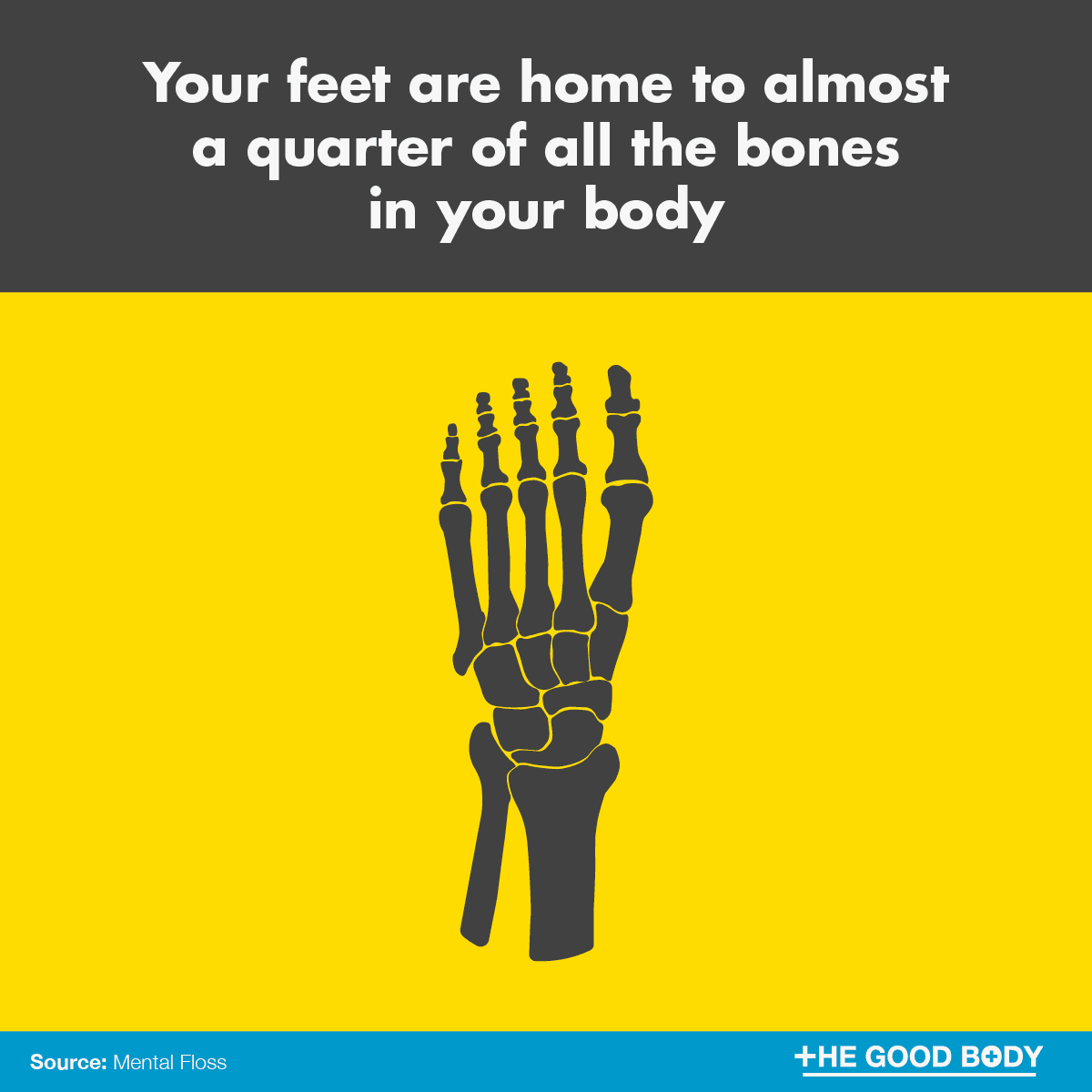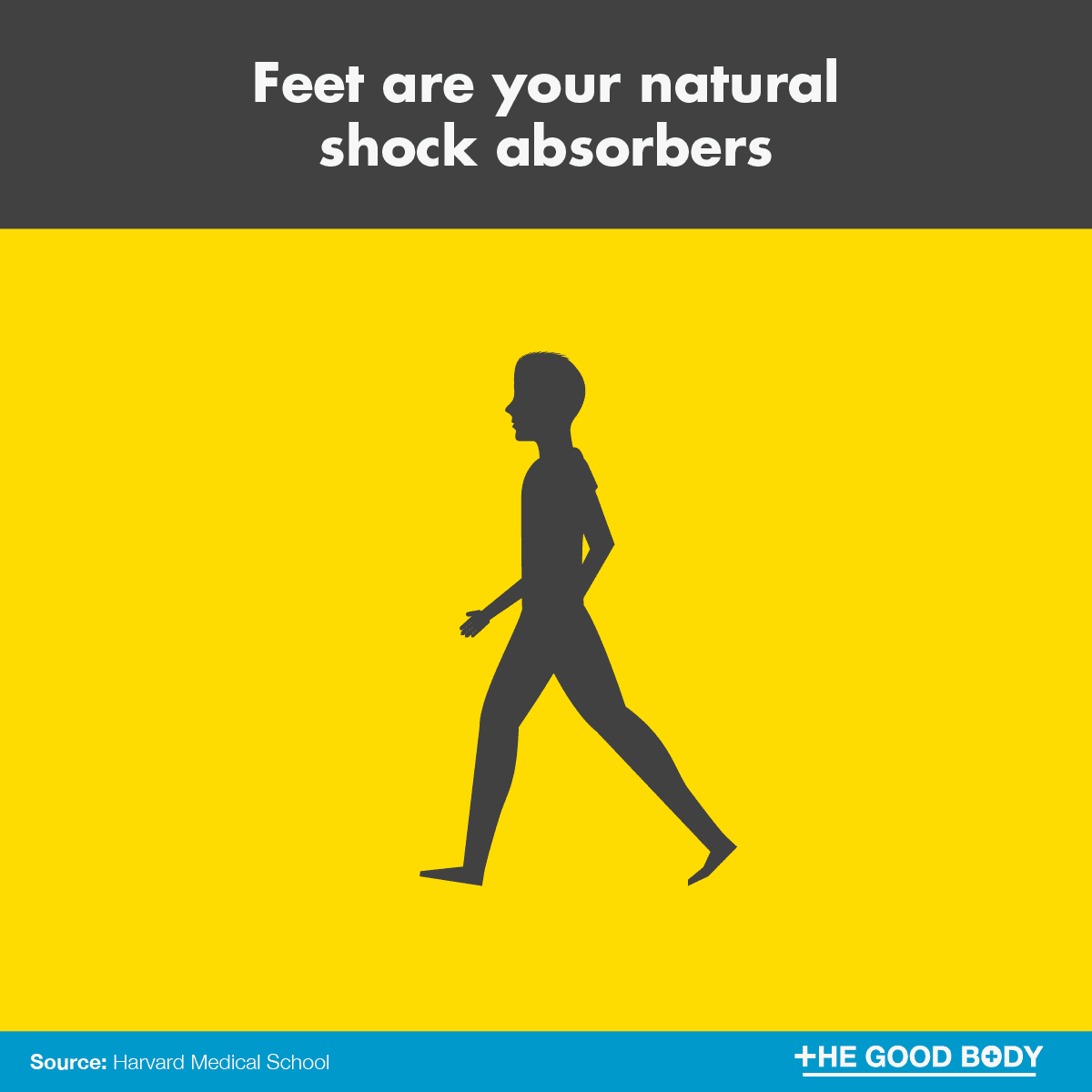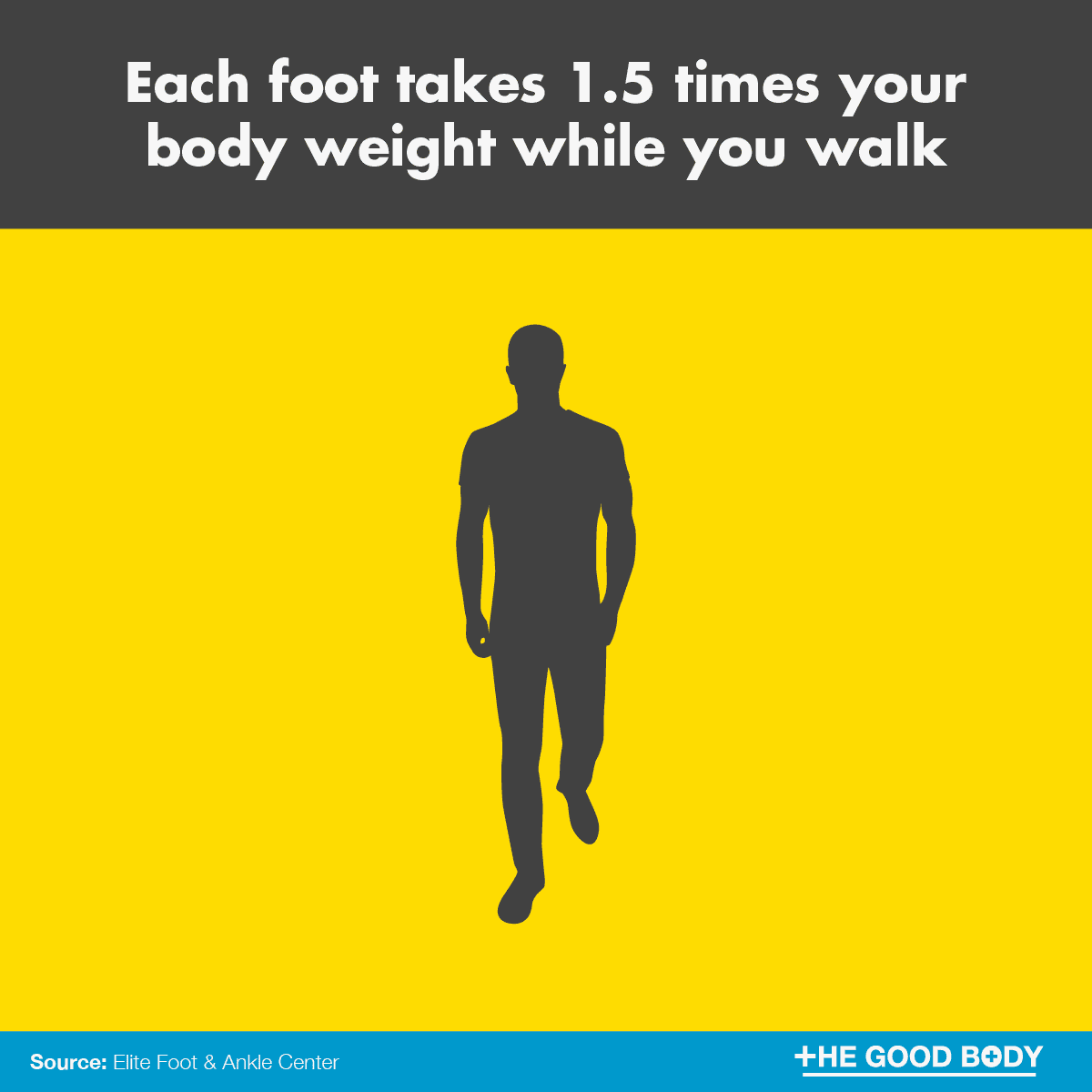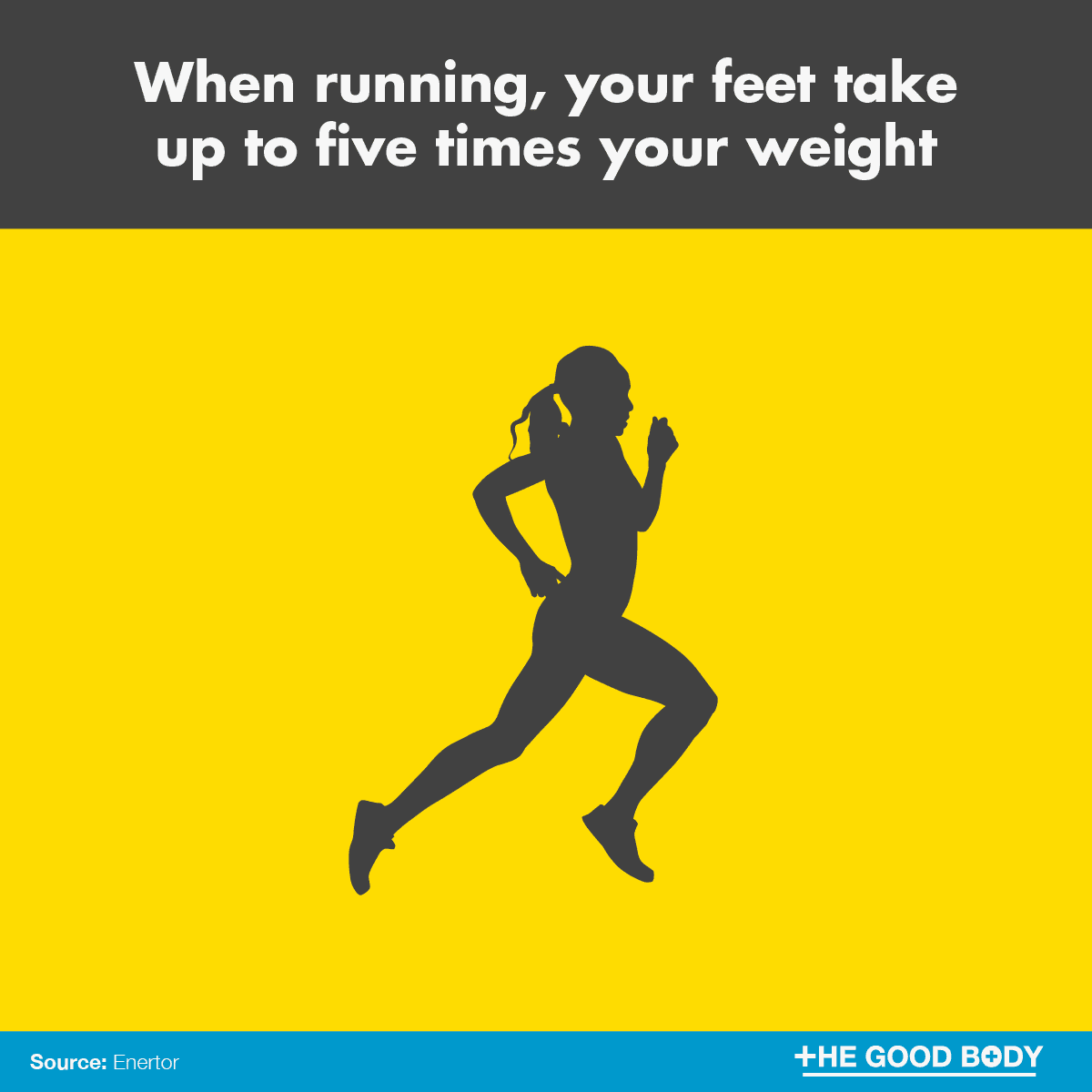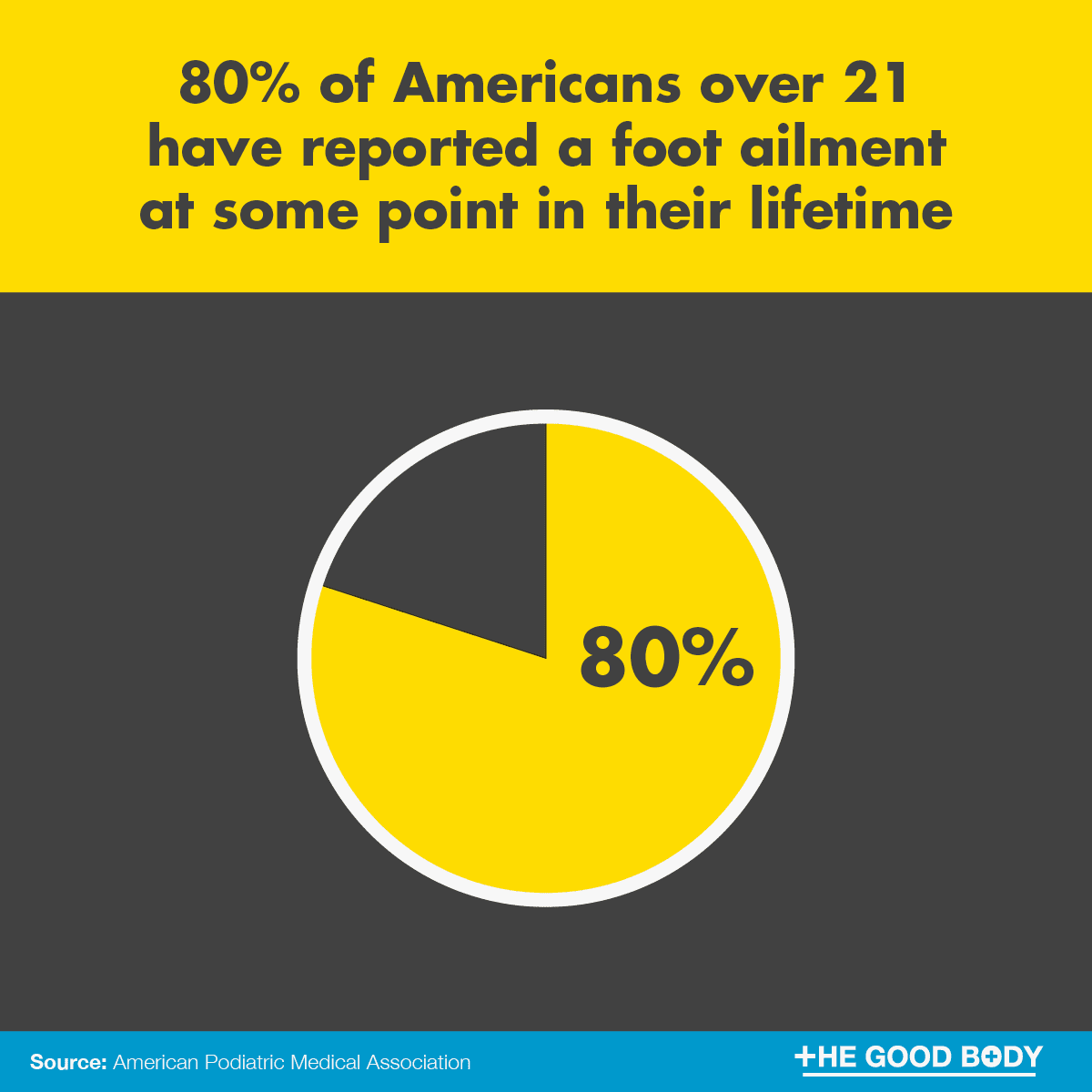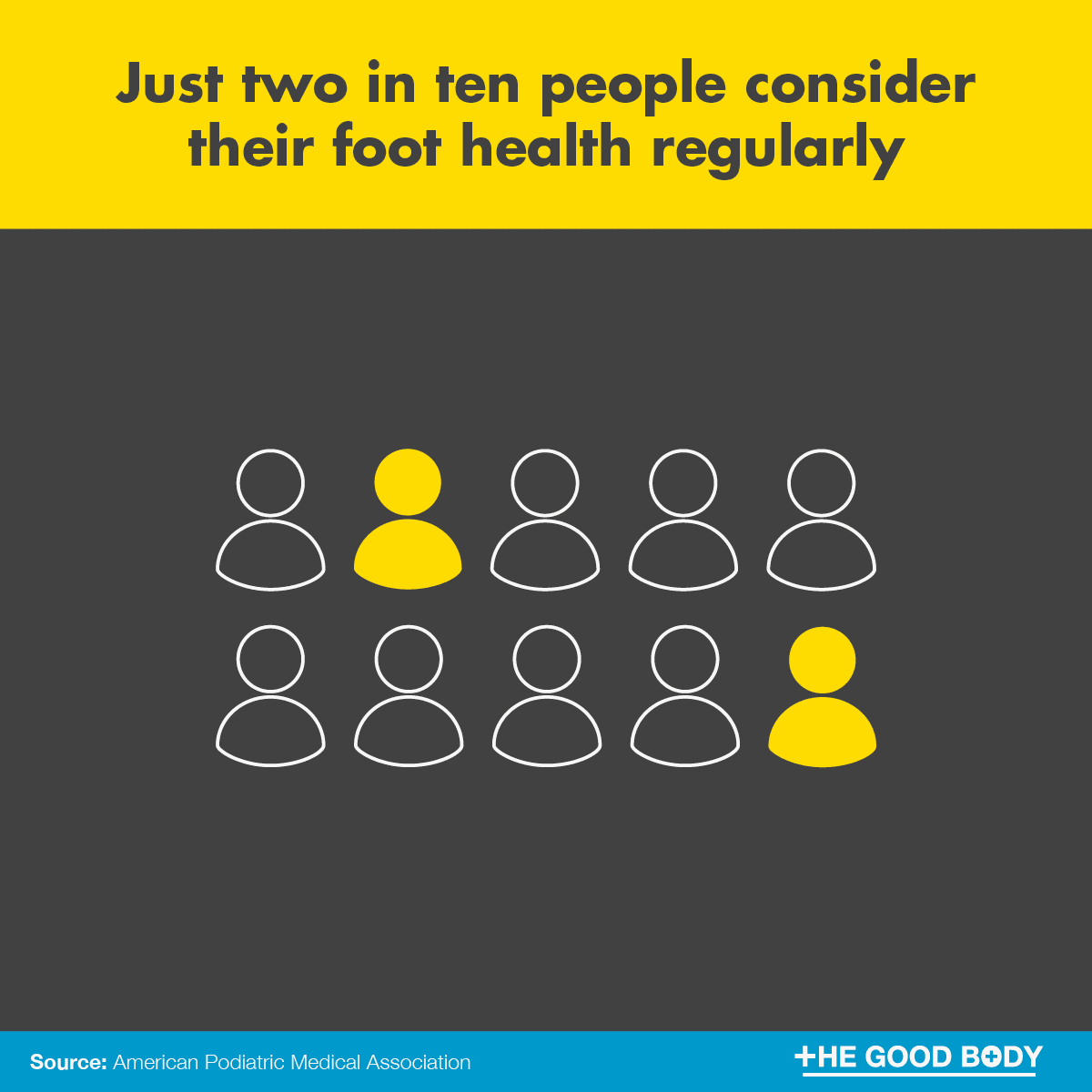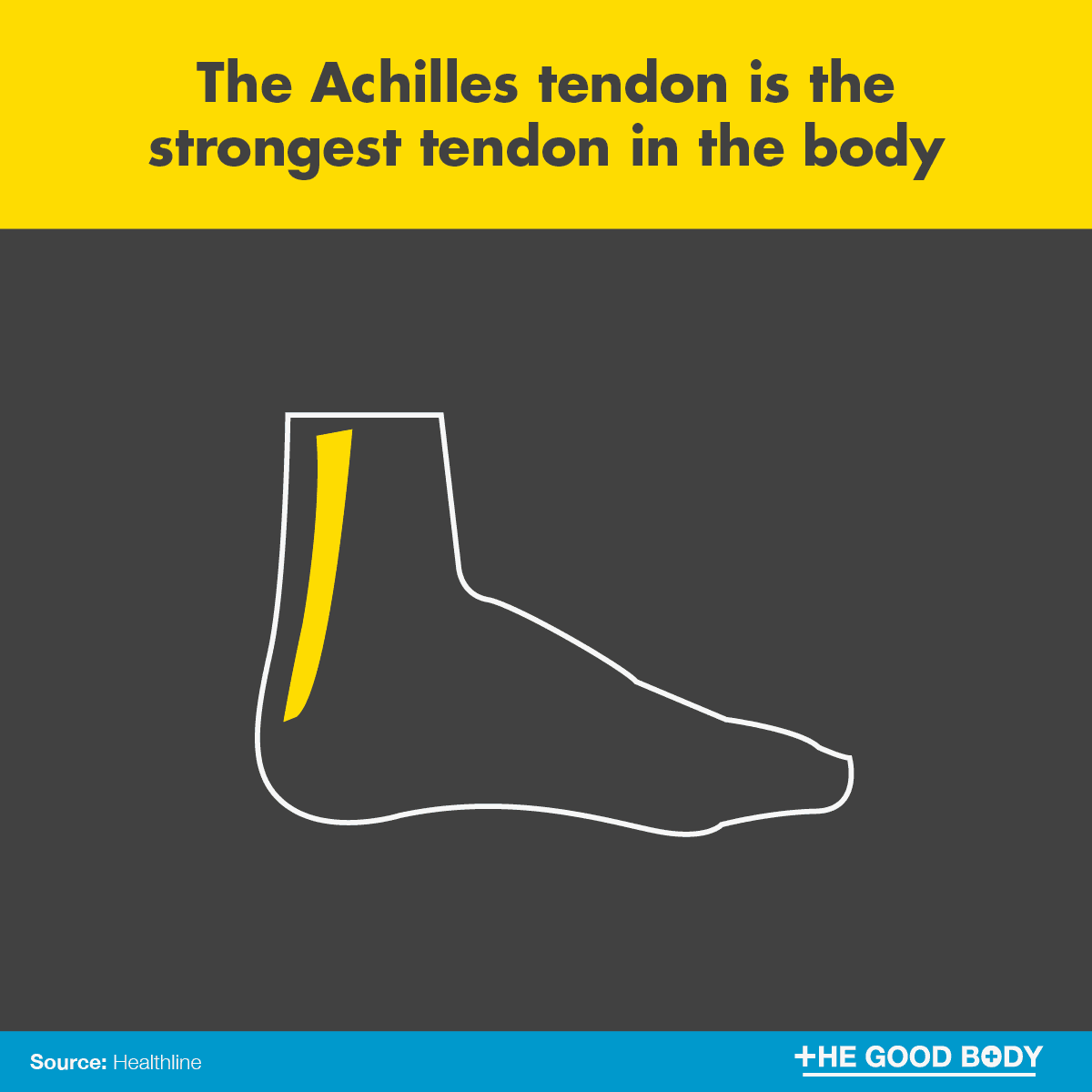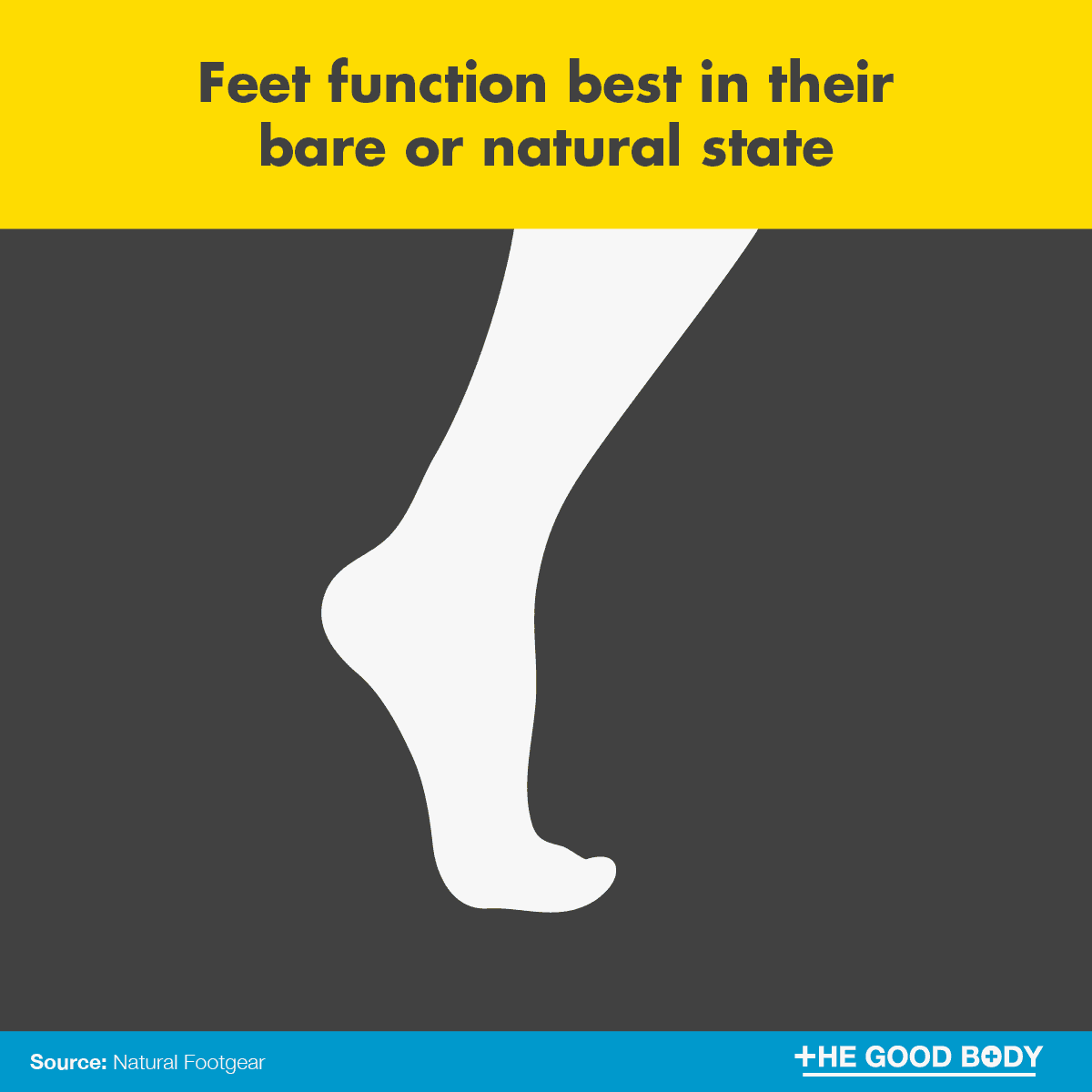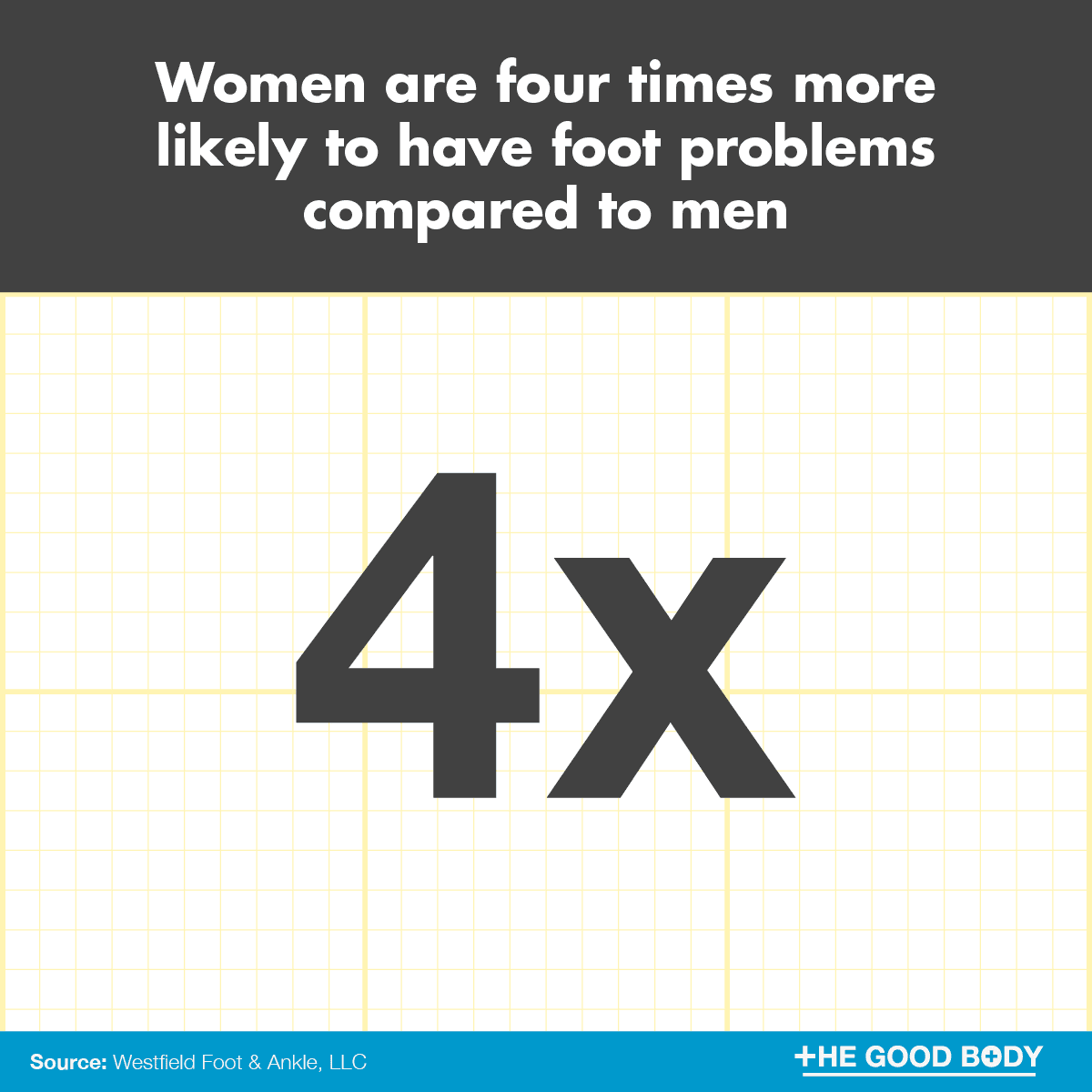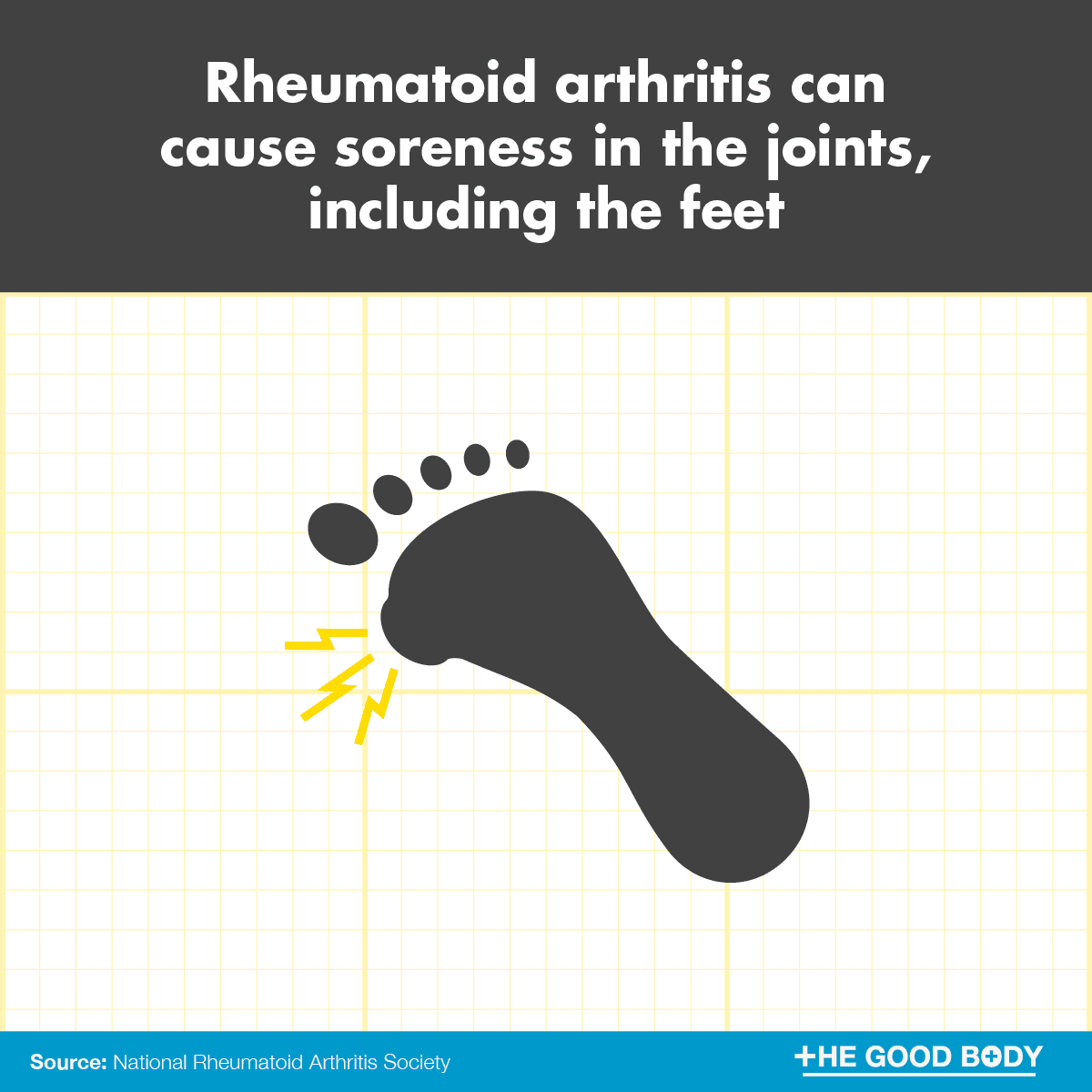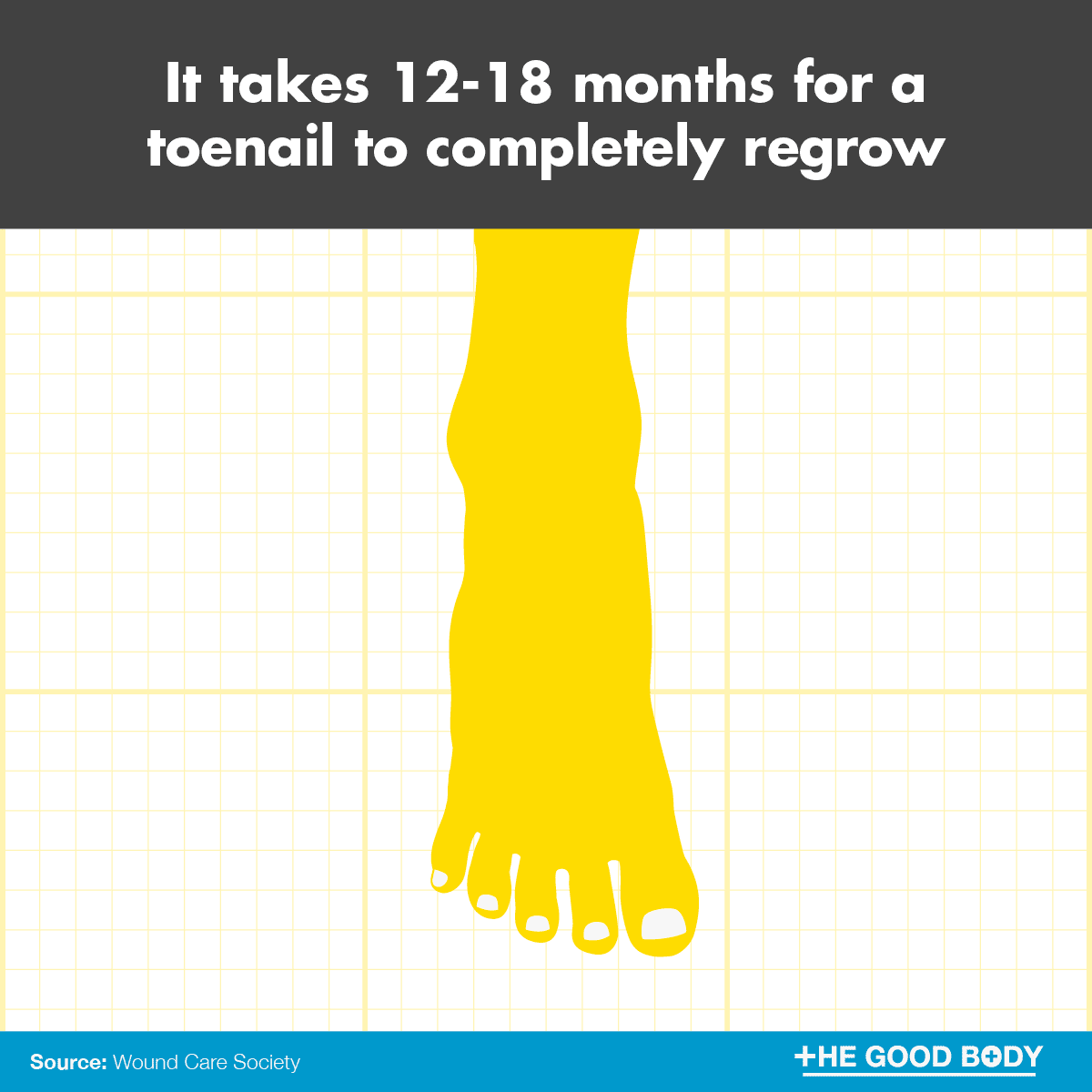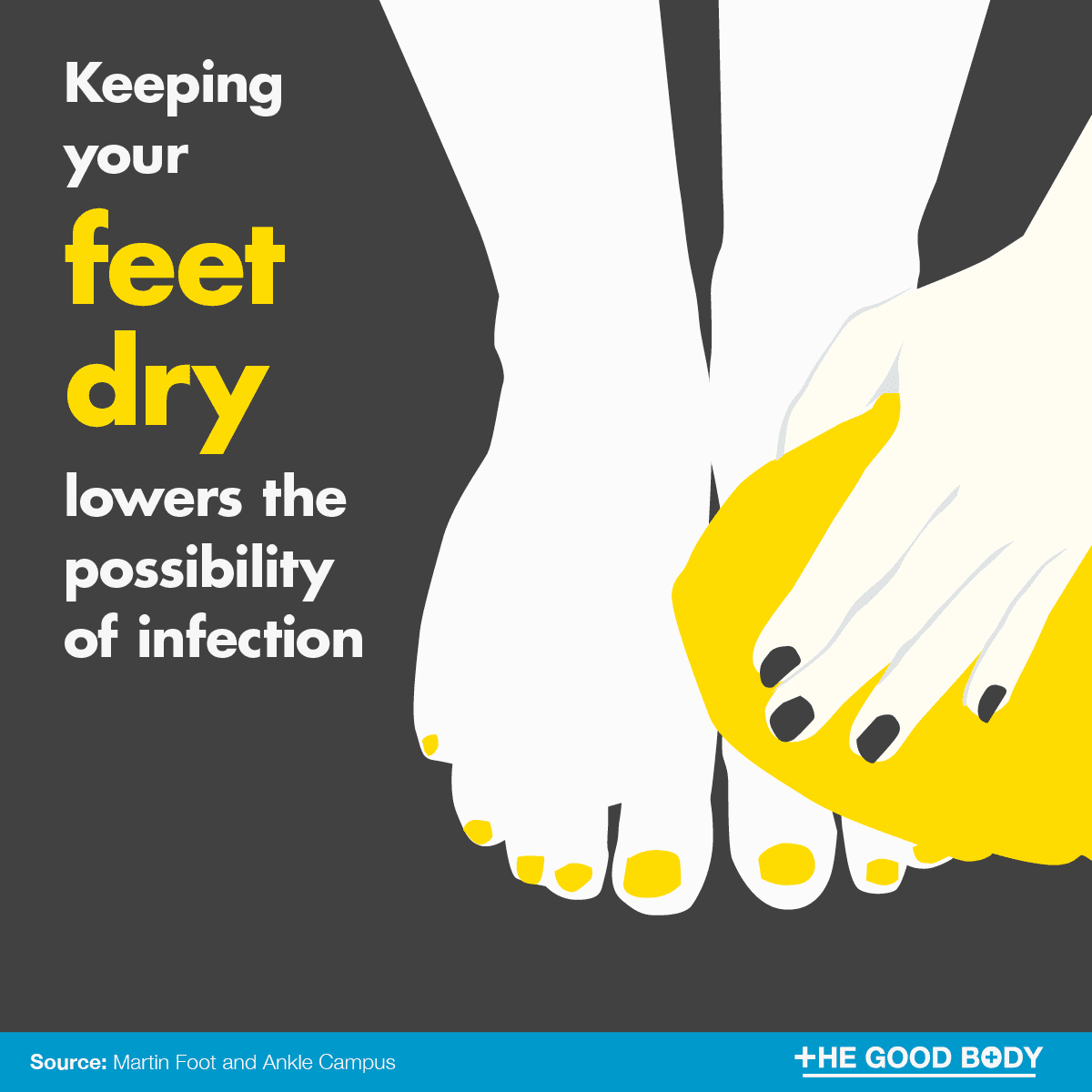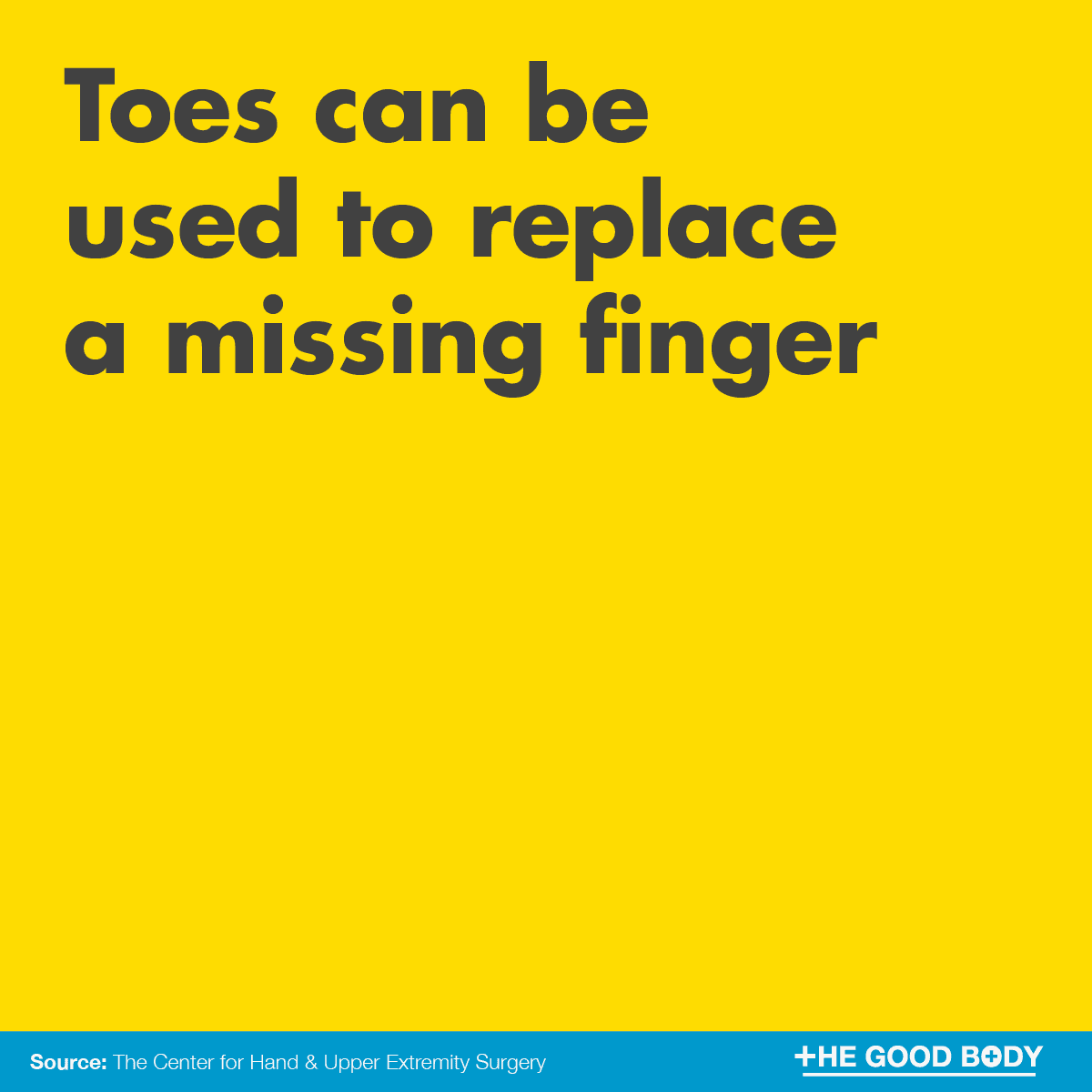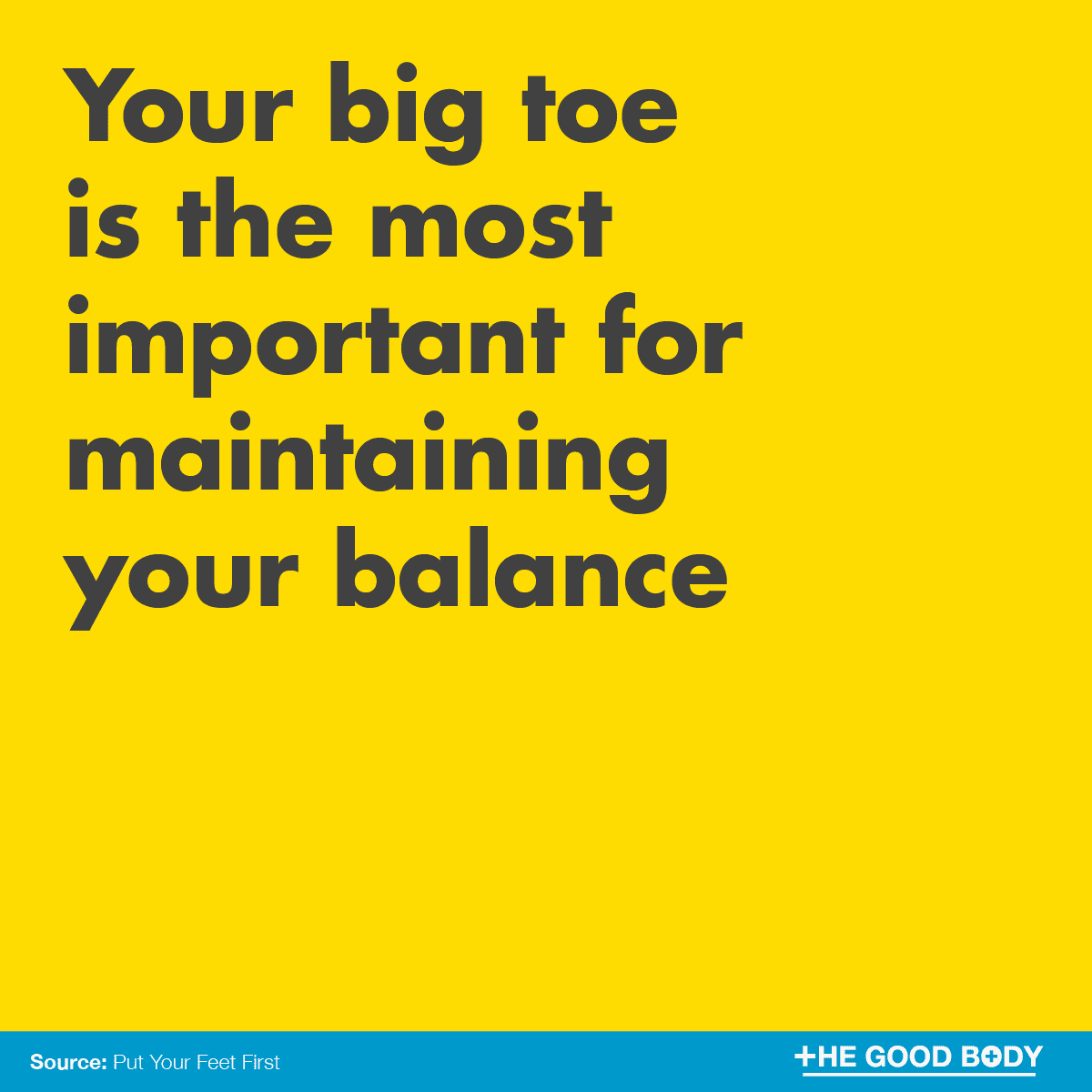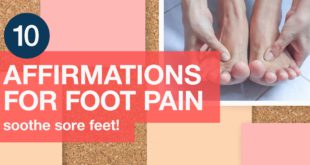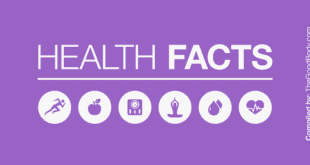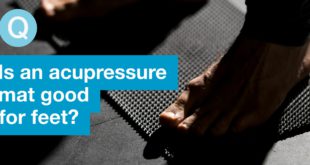Anatomy Foot Facts
Before we can understand how to take care of our feet, we first need to understand how they work.
Take a look below at some of the best anatomy foot facts:
2. There are 26 bones in each foot, as well as 33 joints, 19 muscles and tendons, and 107 ligaments.
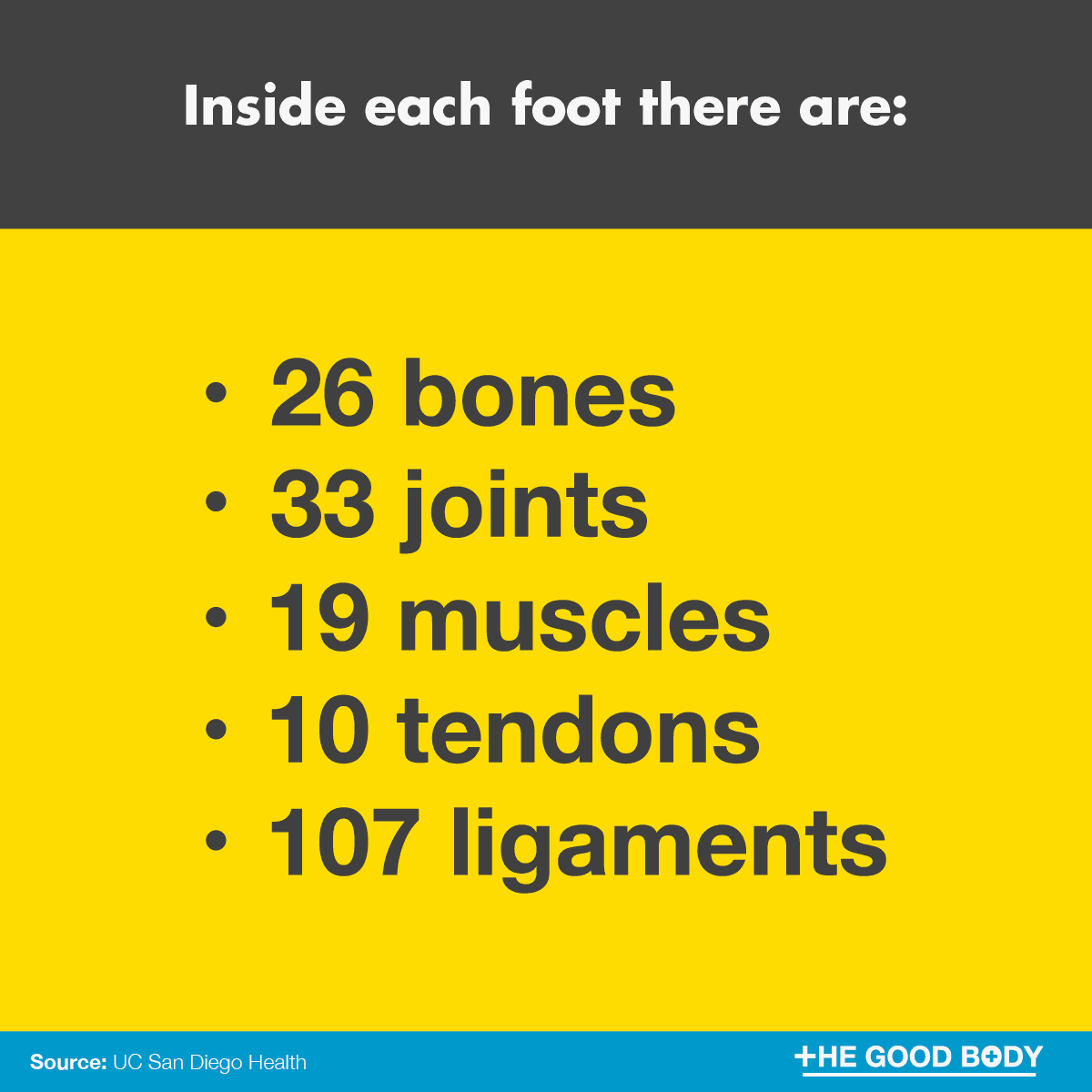
3. Your feet may just be the most ticklish part of your body.
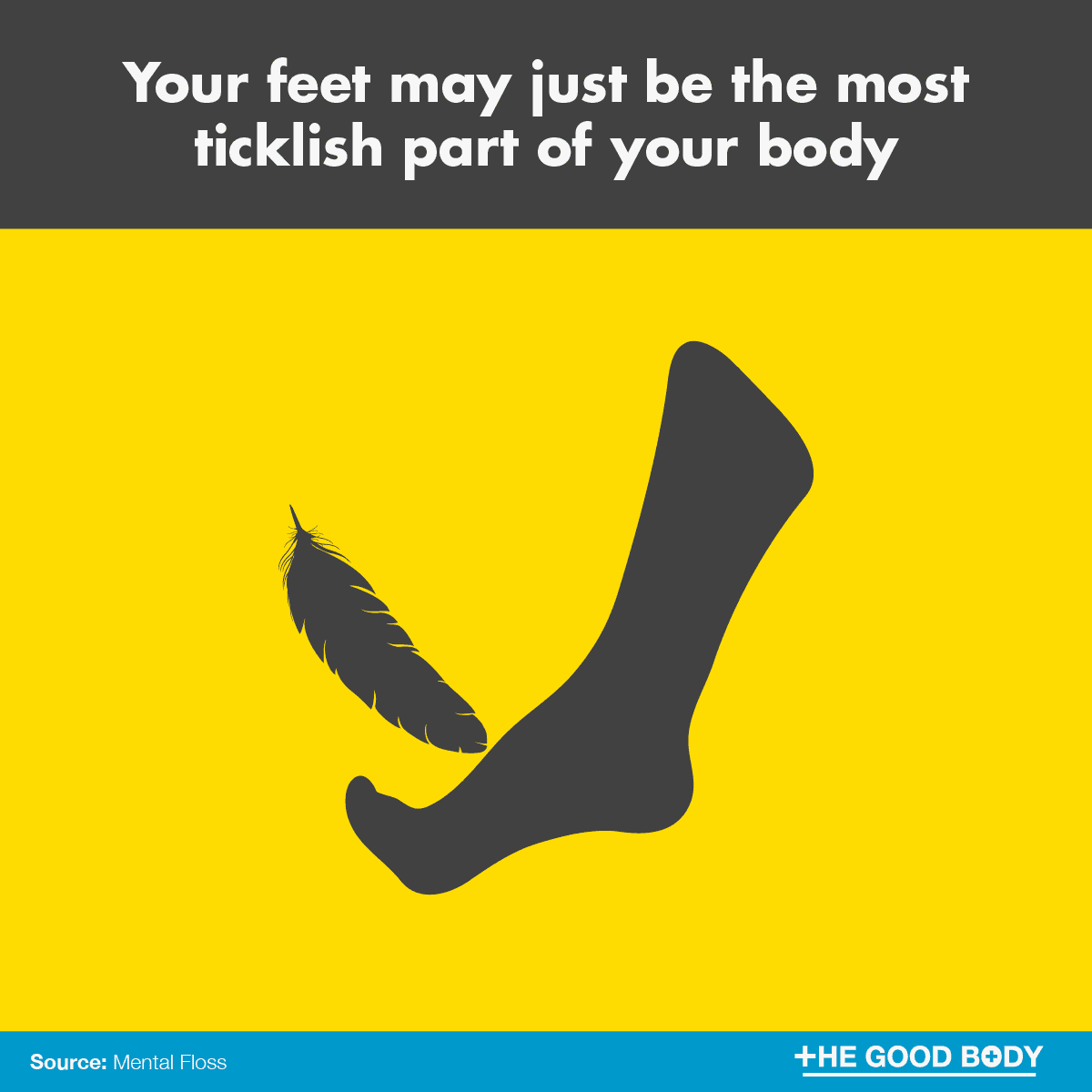
This is because we have 8,000 nerves in our feet.
- Ticklish feet are a good sign, as reduced sensitivity could be a symptom of neuropathy, a medical condition that is often linked to diabetes.
4. Your two feet have 250,000 sweat glands that are capable of producing half a pint of sweat in a single day!
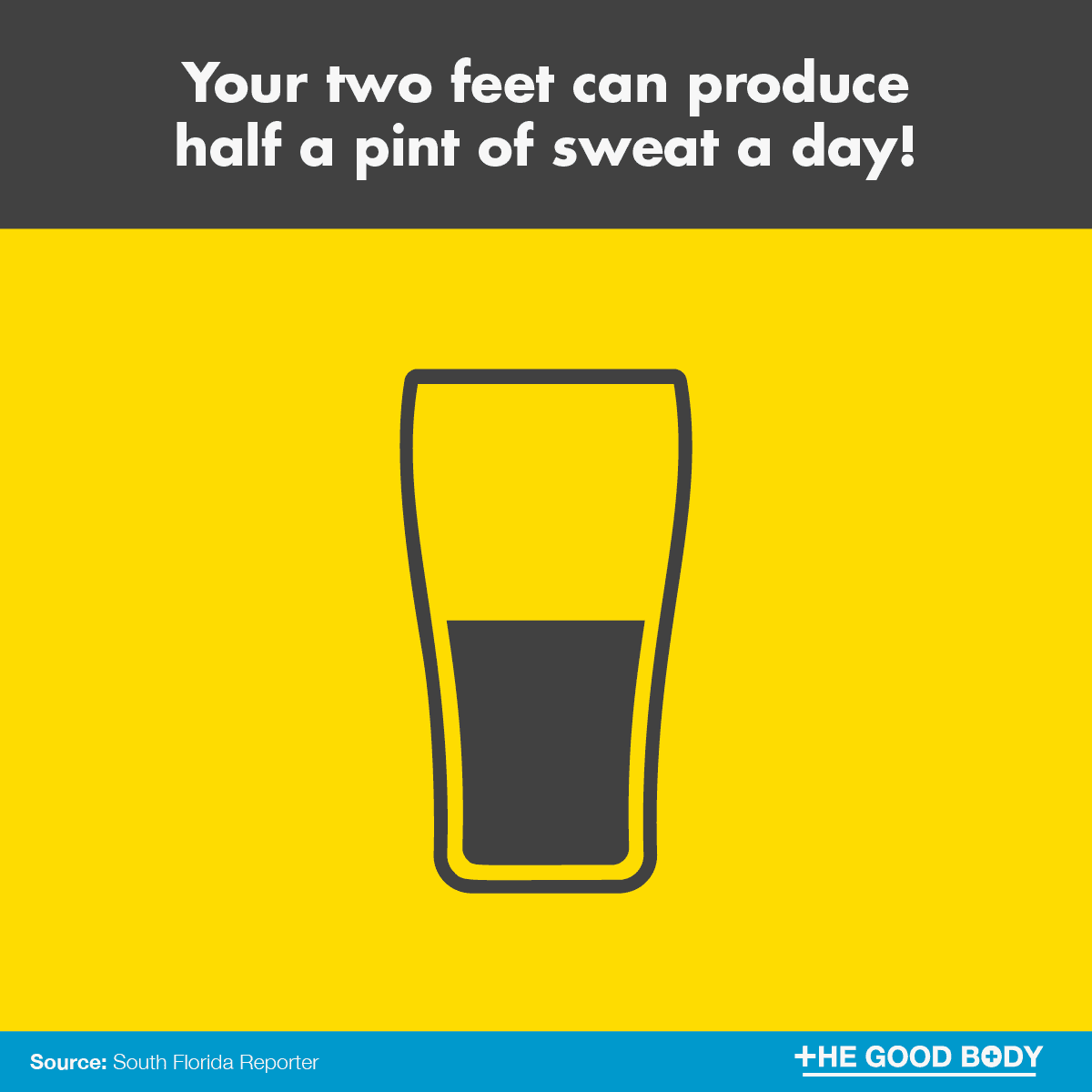
5. Morton’s toe is the name given to the condition where the second toe is longer than the big toe. It affects 20-30% of the world’s population.
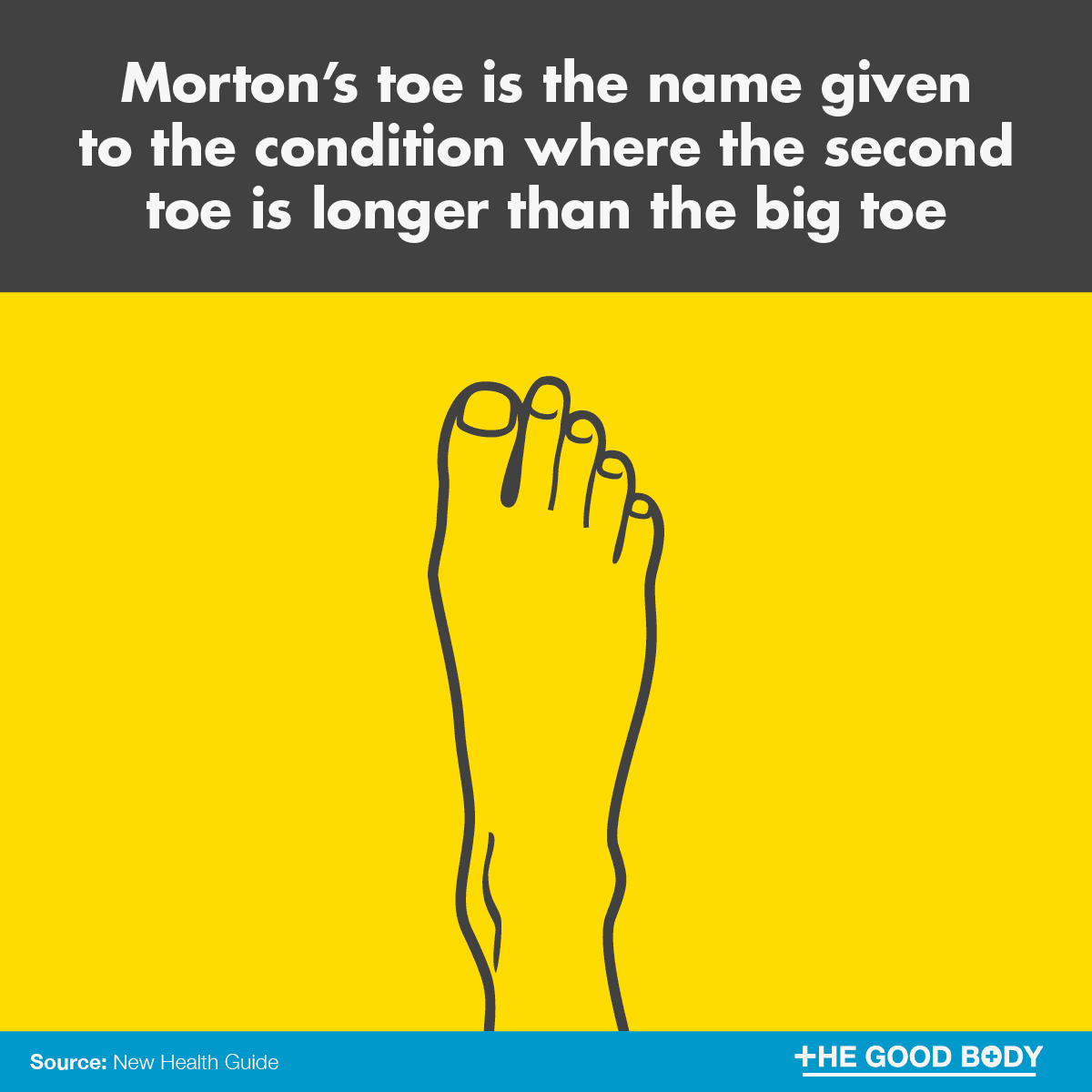
6. When we’re born, our feet are underdeveloped, which is why it takes time for arches to form.
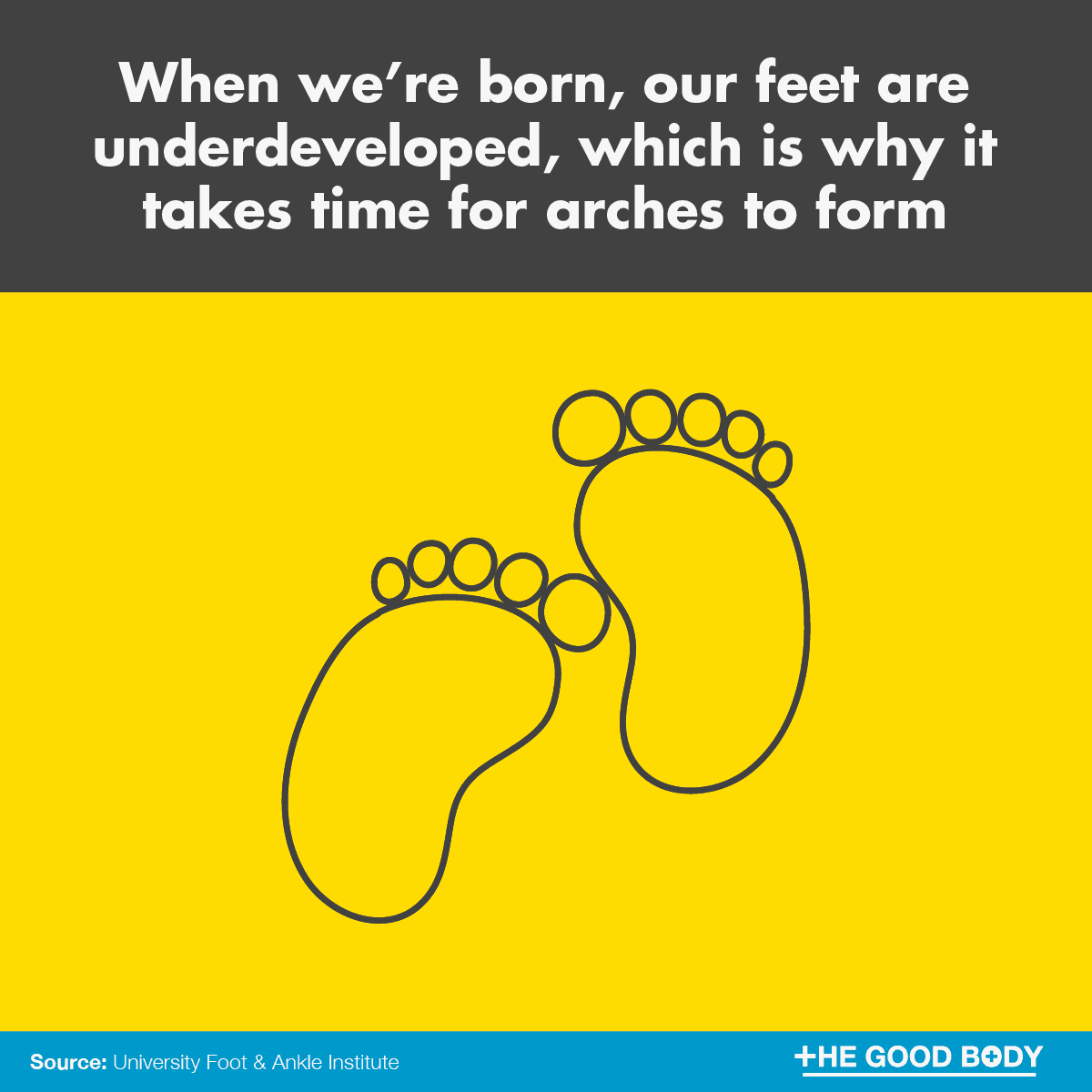
The bones in our feet don’t finish hardening until 21 years of age.[1]
8. Although prosthetics have come a long way, the complexity of the human foot and ankle mean it is hard to replicate.
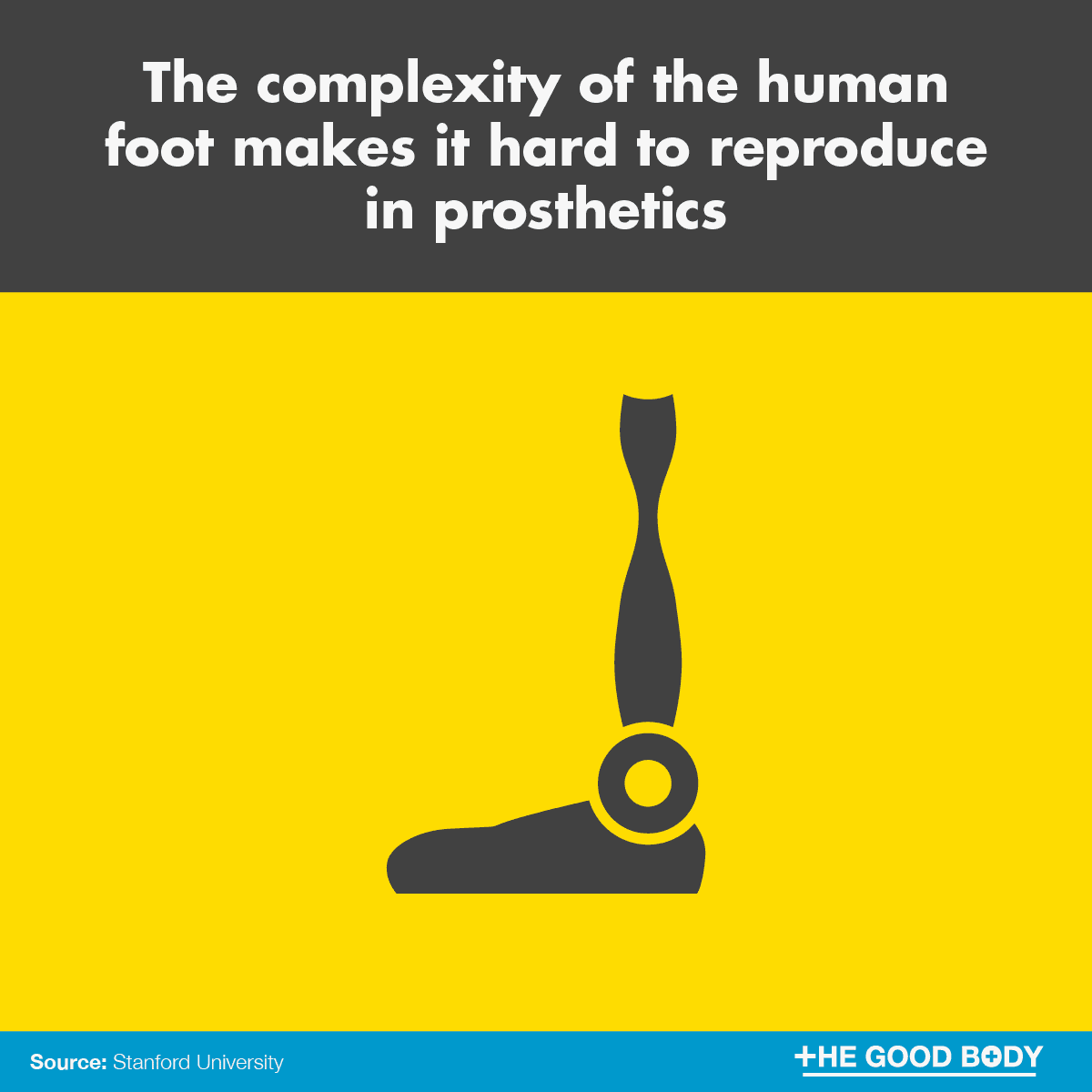
Fun Feet Facts
Looking for silly and fun feet facts? We’ve got you covered!
1. Shoe sizes were originally measured in barleycorns.
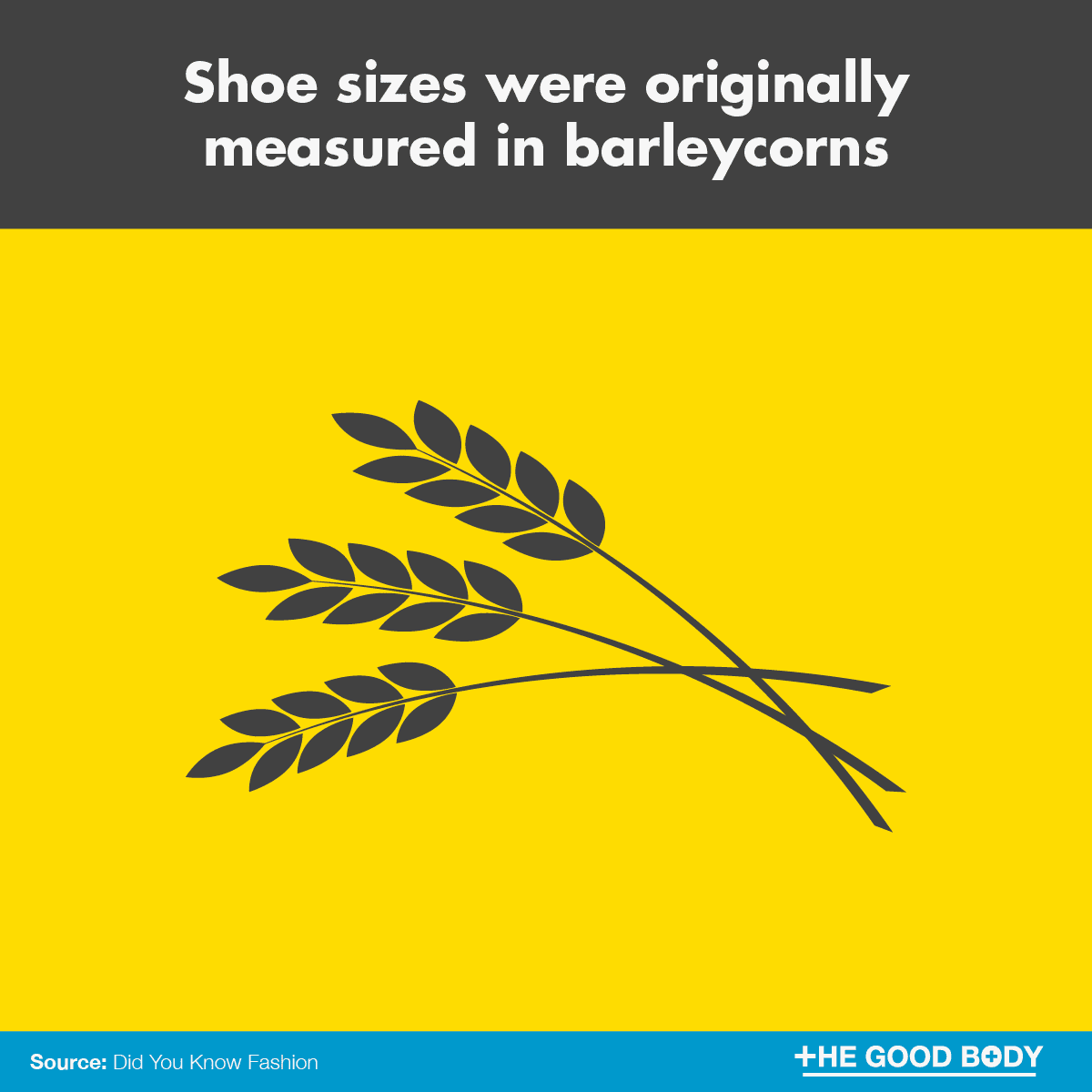
This unit of measurement originated in the United Kingdom during the 14th century and is still being used around the world today.
Based on the length of a grain of barley, each shoe size adds a third of an inch, corresponding to the fact that there are three barleycorns in an inch.[2]
4. The first shoe dates back to 3500 BC. Made of a single piece of leather, it was recently found in present-day Armenia

5. 1 in 1,000 babies is born with an extra toe or finger. The condition is called polydactyly.
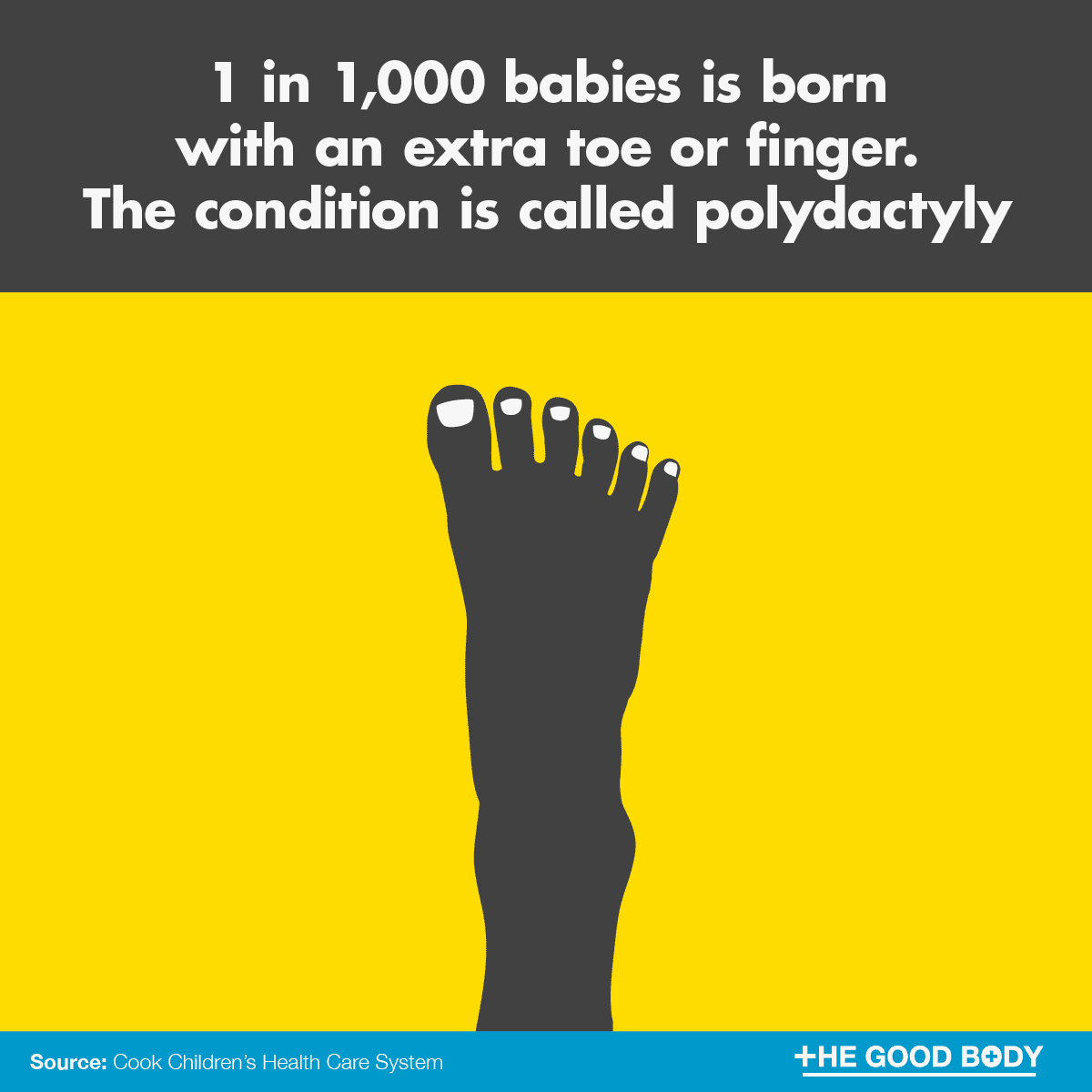
6. The soles of your feet contain more sweat glands and nerve endings per square inch than anywhere else on your body.
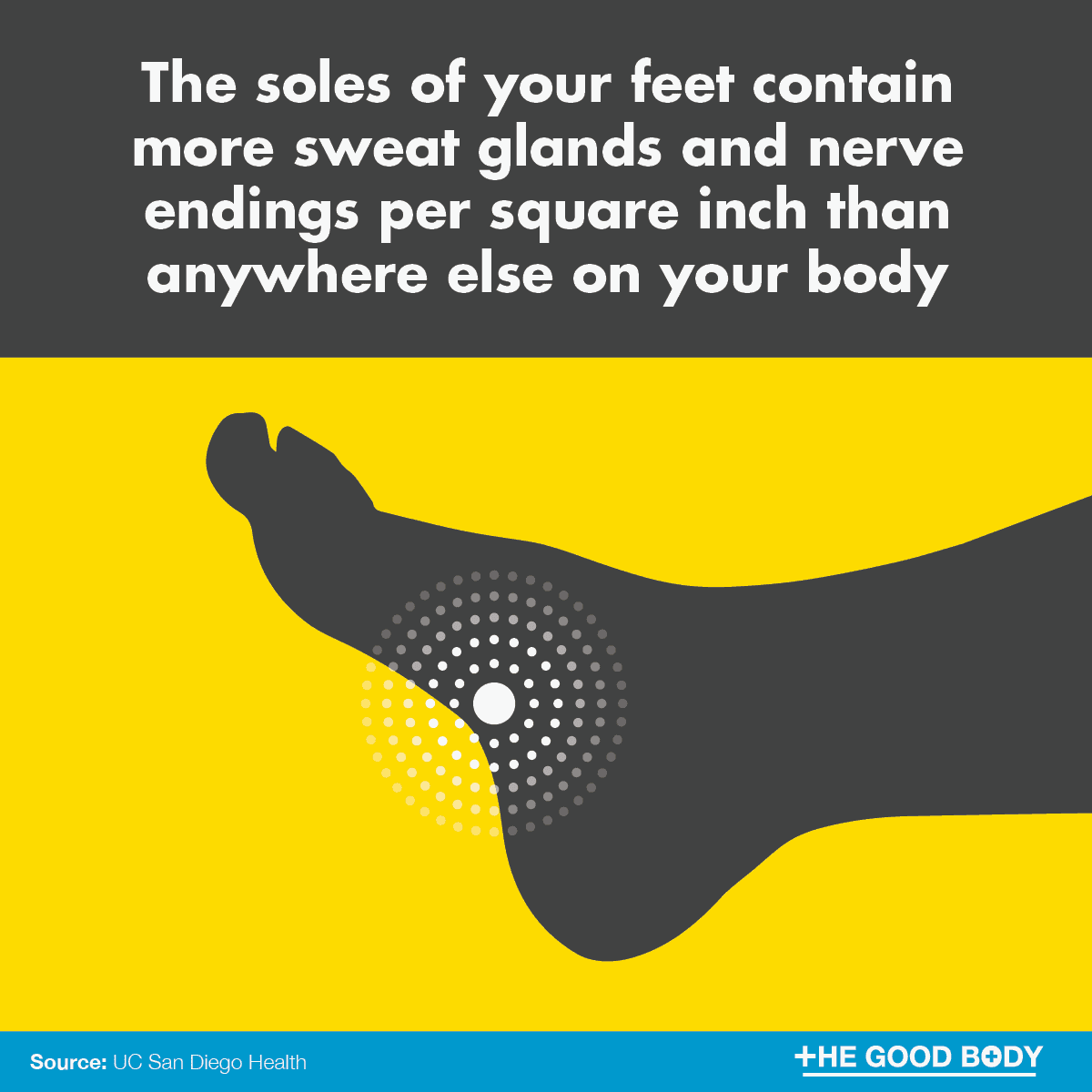
7. Our feet are getting bigger! The most popular shoe sizes have increased over the last 30 years, from size 7½ to 8½ for women, and from size 9½ to 10½ for men.
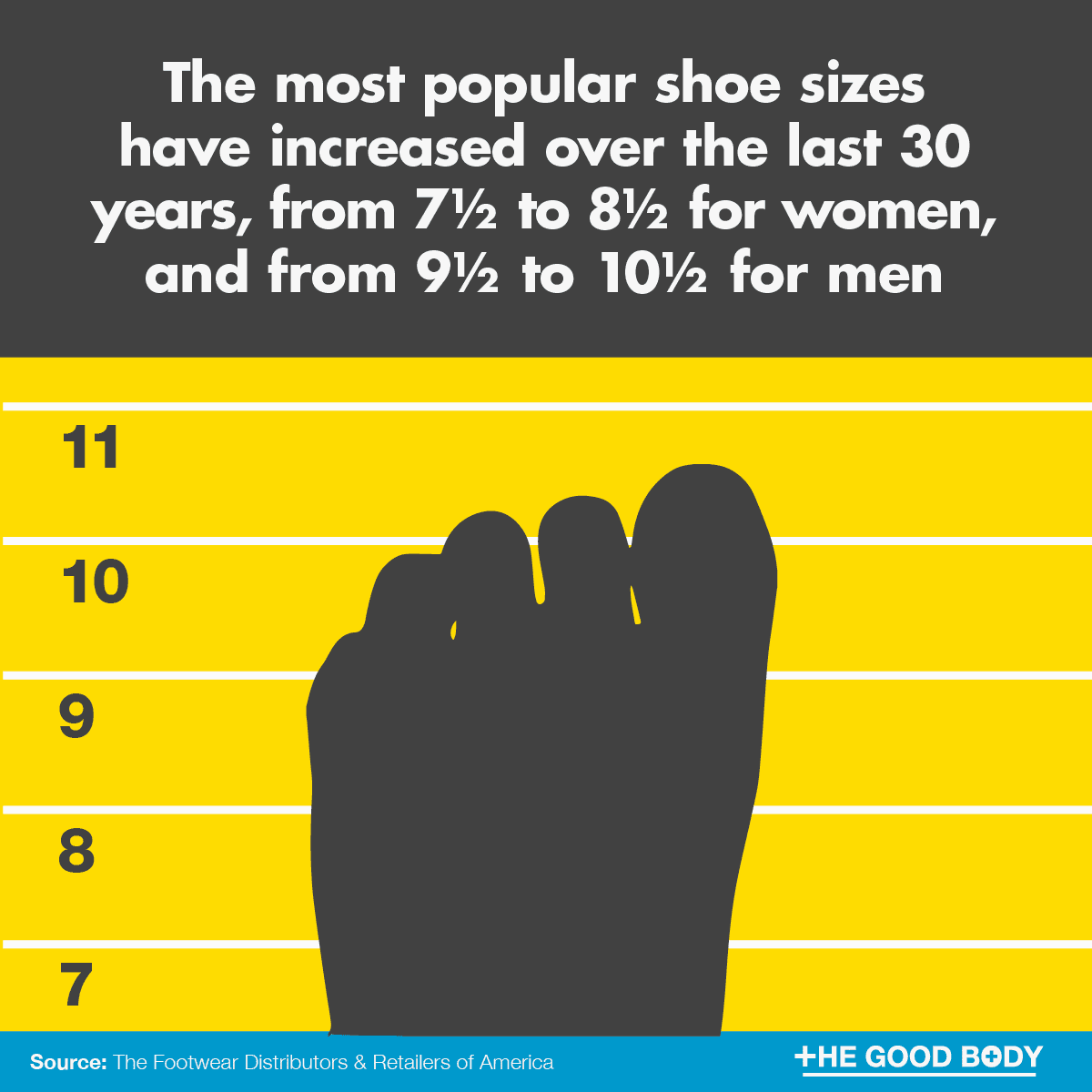
According to Harvard Health, massage devices from pharmacies or health stores can relax and restore your feet.[3]
8. A foot massage can improve your mood and overall health, plus it feels good!
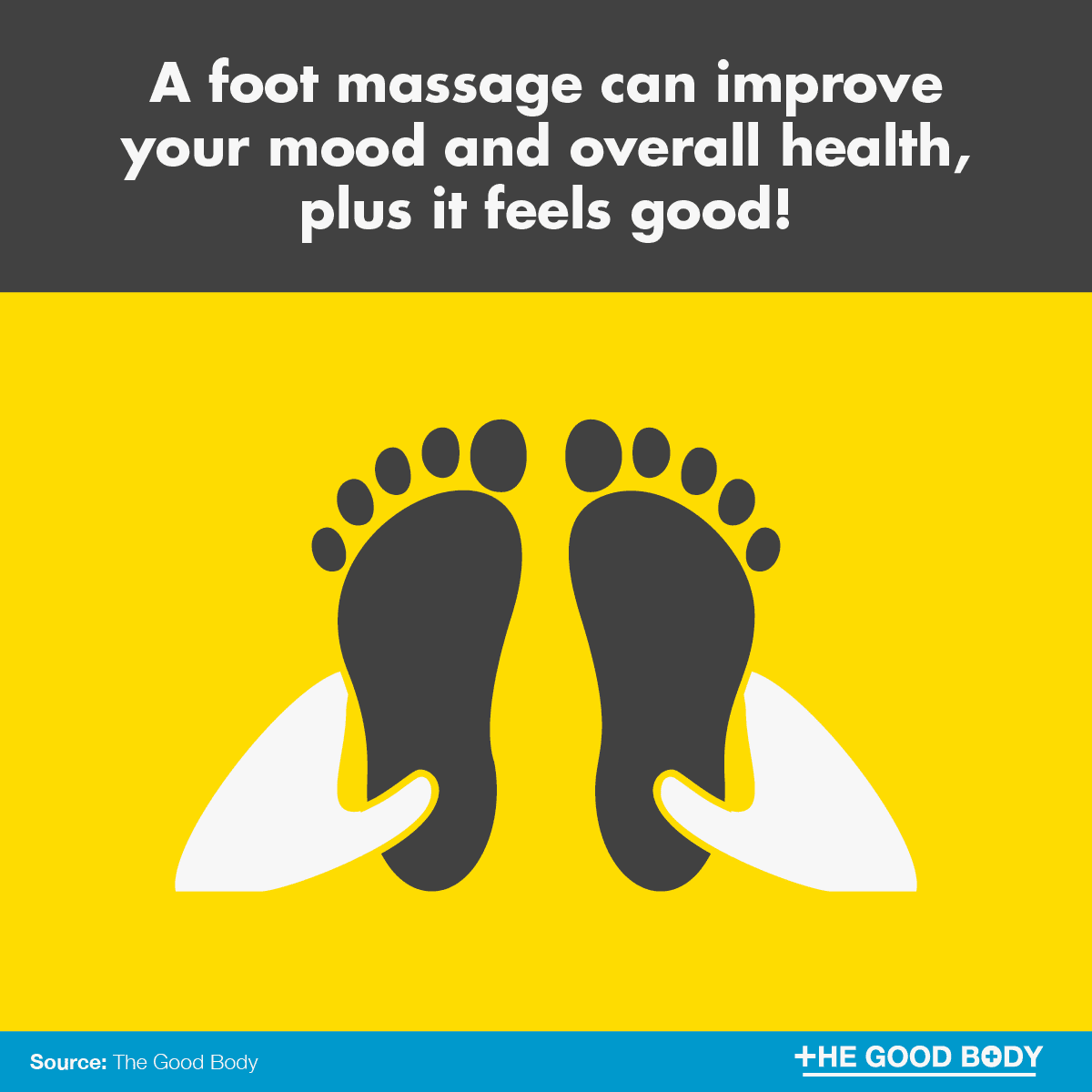
- For most people, it’s not feasible or practical to visit a masseuse regularly. If you’d like to give your feet frequent pampering, why not consider a foot massaging device for home use.
Healthy Feet Facts
Our feet can tell us so much about our overall wellbeing!
Learn more from our list of foot health facts:
1. Feet often reflect your general health. Abnormalities or pain in the feet can often signal more serious health conditions.
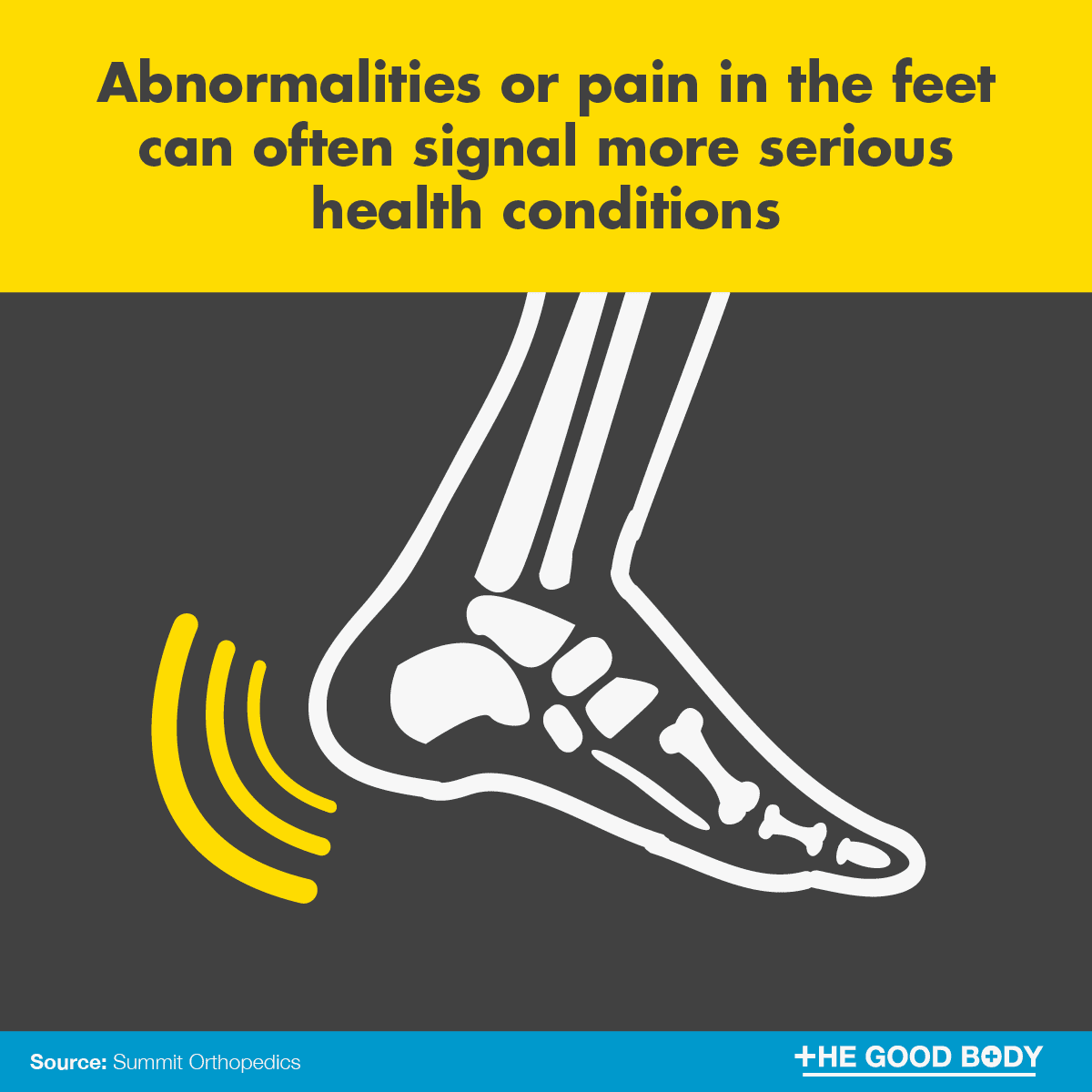
2. The average person walks 110,000 miles in their lifetime.
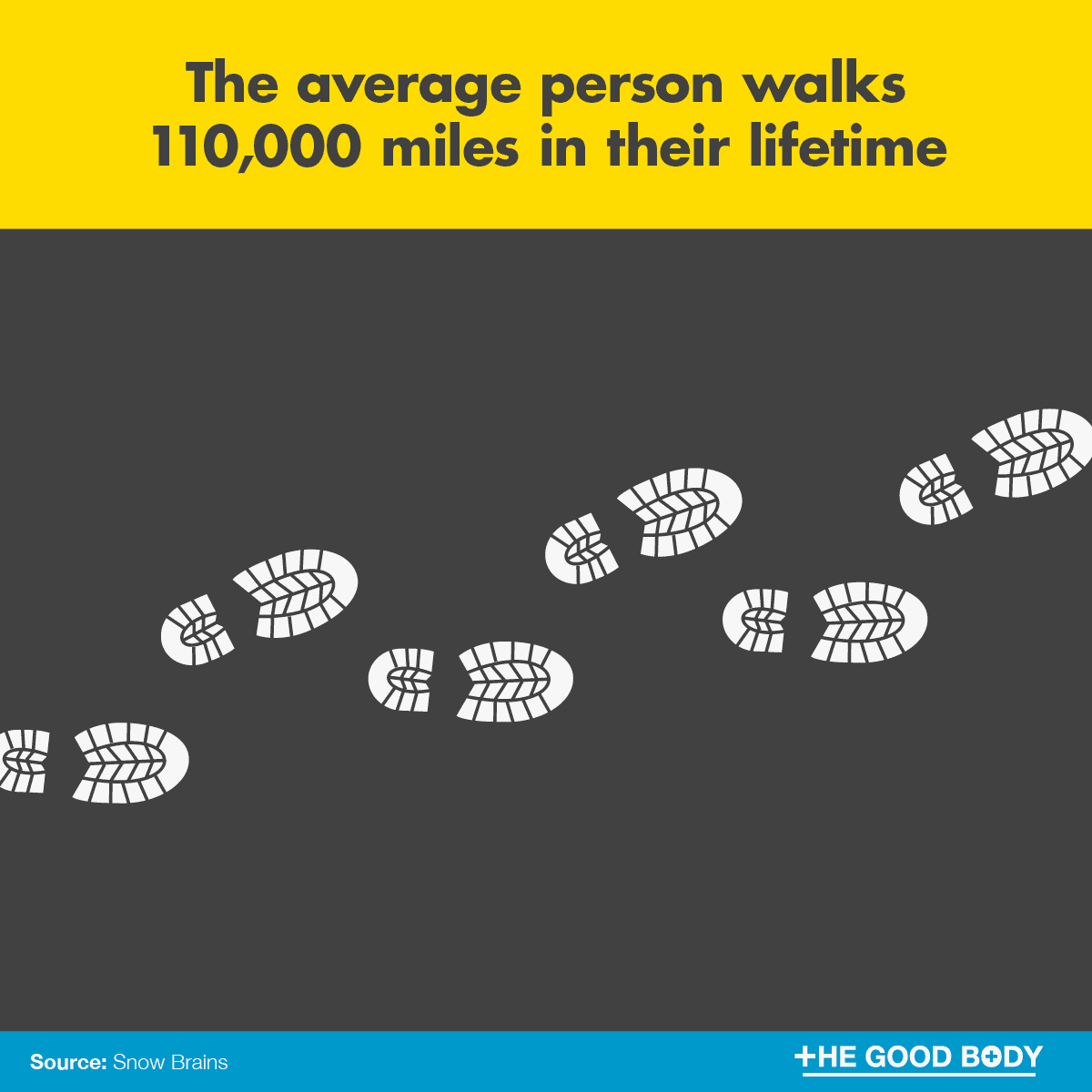
If you’re wondering what that equates to each day, statistics show that the average American walks between 3,000 and 4,000 steps daily.[4]
- The most commonly reported foot ailments include nail problems, plantar fasciitis, and pain in the balls or heels of the feet.[5]
MYTH:
Athletic shoes are good for the feet and built to maximize comfort.[6]
Foot Injuries and Problems
With so much going on inside our feet, these foot injury facts may come as no surprise:
MYTH:
If I’ve broken a bone, I won’t be able to move it.[7]
1. Ankle sprain is the most common foot ailment, even compared to blisters, calluses, foot fatigue, cracked skin and athlete’s foot!
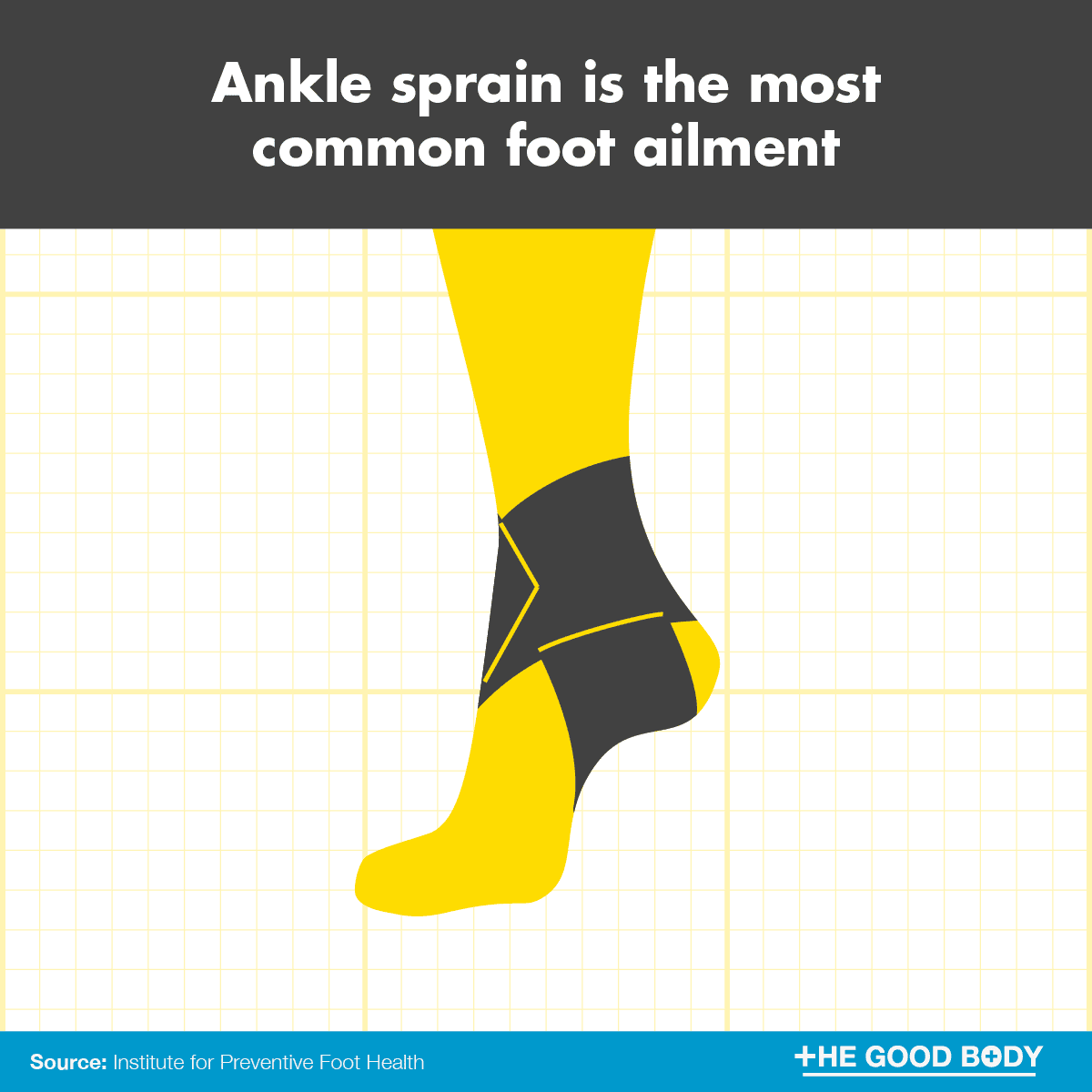
2. Commonly seen in athletes, shin splints are a cumulative stress disorder caused by repetitive stresses on the bones, muscles and joints in the legs.
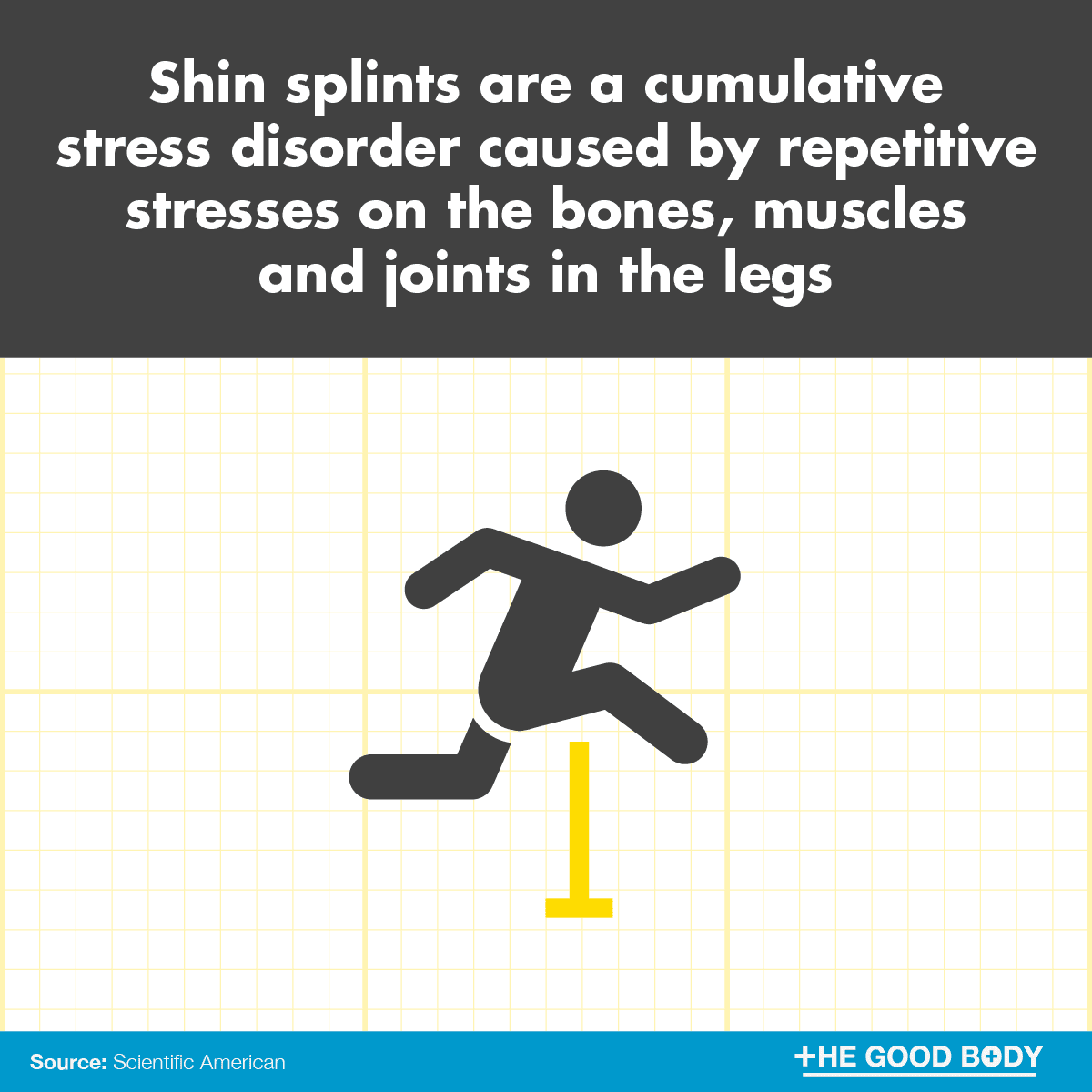
- This is primarily attributed to the fact that women wear heels. Western women started wearing heels in the 17th century after European men got the idea from Persian warriors.[8]
4. Plantar fasciitis is one of the most common forms of foot pain. It affects more than 2 million people a year.
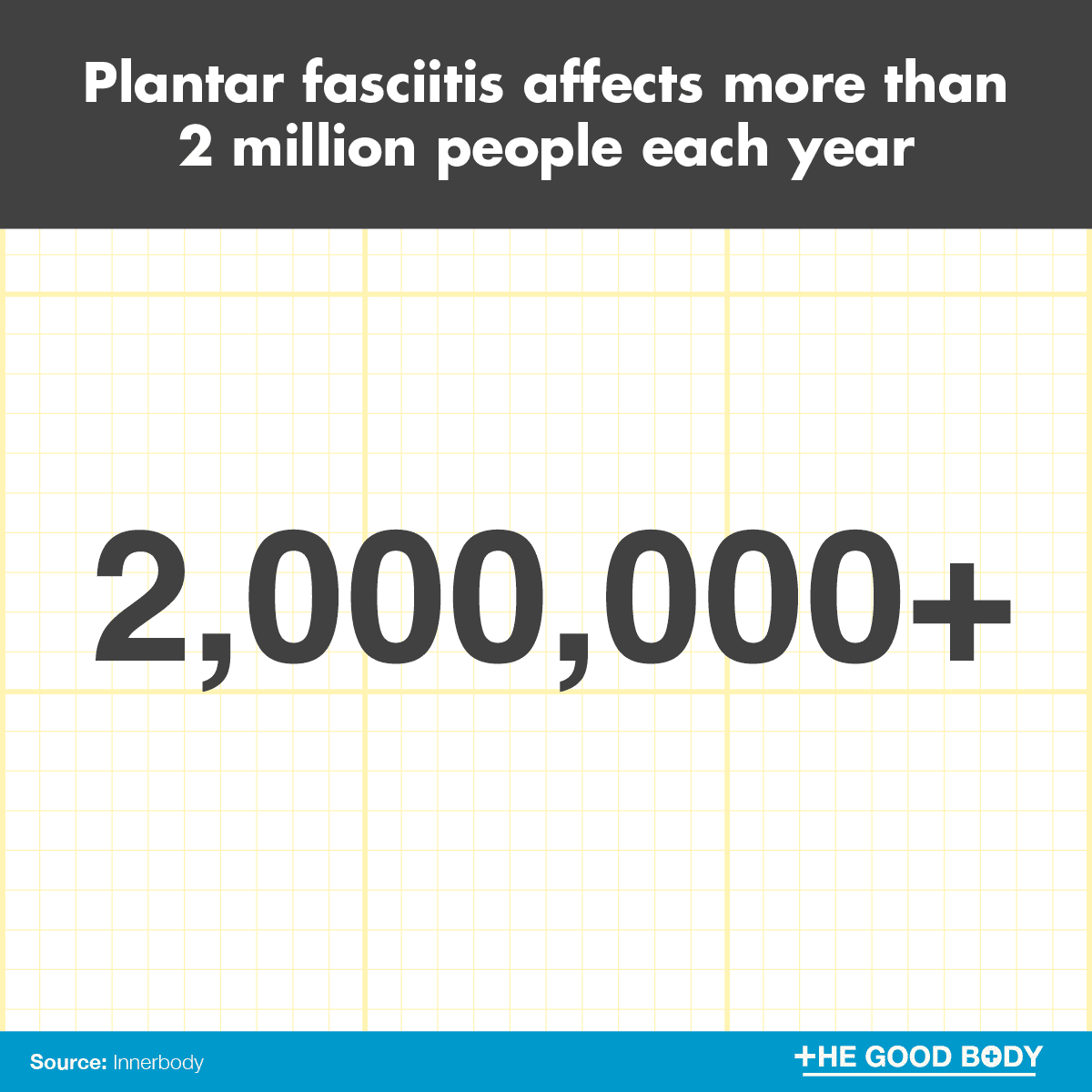
More than 54 million adults (aged 18 and over) have doctor-diagnosed arthritis.[9]
- Women are more likely to have doctor-diagnosed arthritis at 26 percent, compared to 19 percent of men.[10]
7. Over the course of a day, your feet take a cumulative force of several hundred tons.
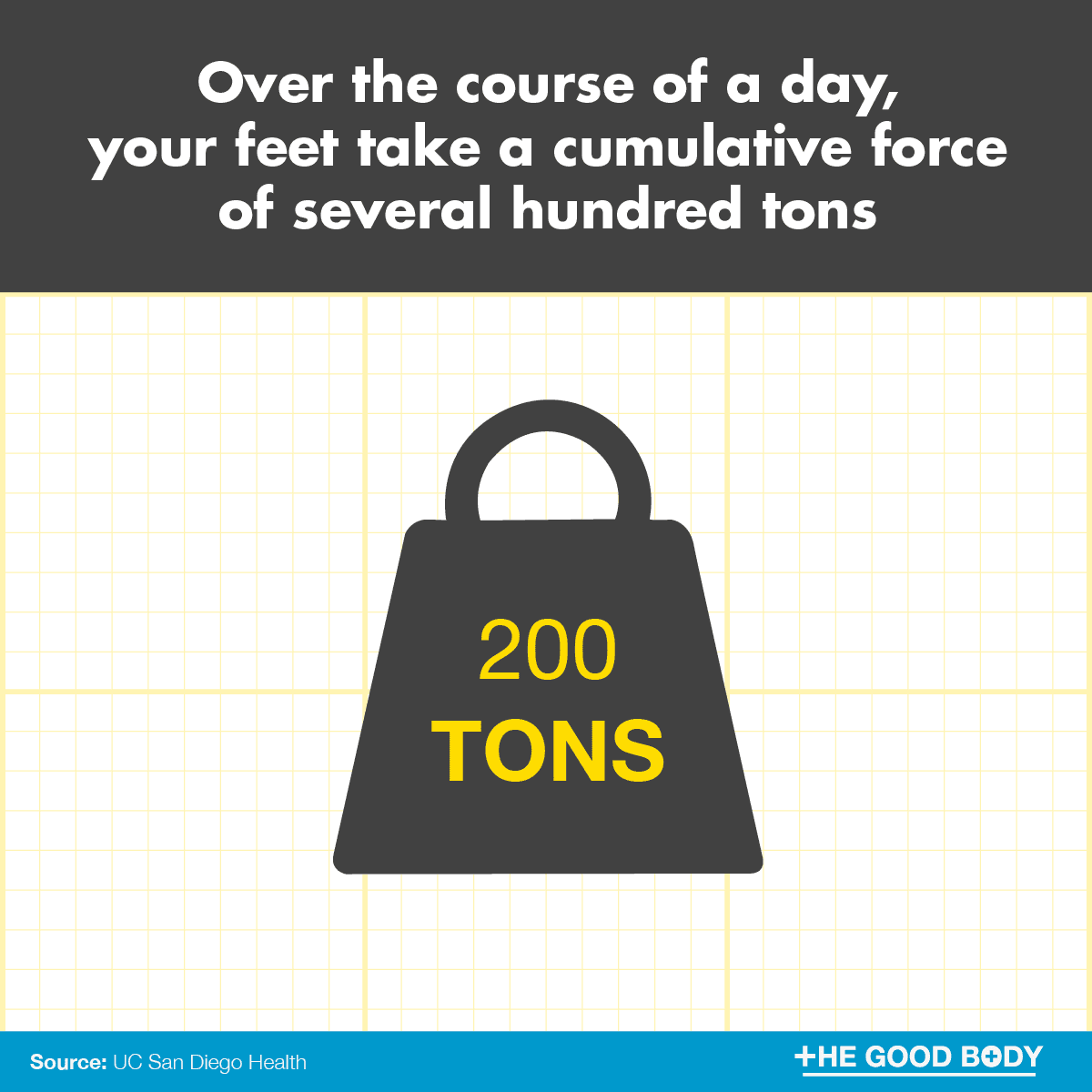
Foot Care Facts
If you’ve tried all the lotions and potions on the market then read these foot care facts.
You may discover some less conventional treatment options…
1. Reciting a daily affirmation has been shown to reduce the associated symptoms of foot pain, including stress.
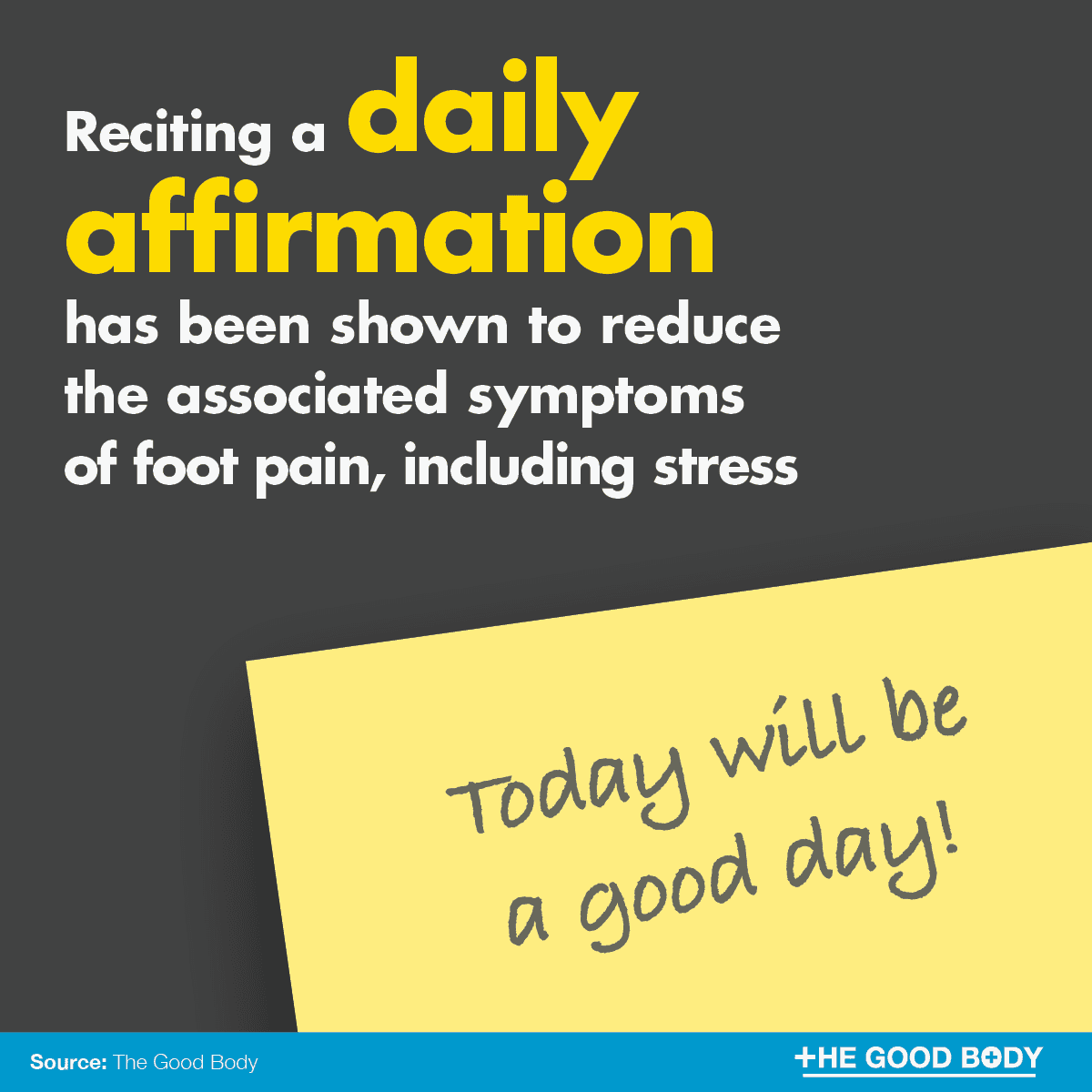
Reciting a positive daily mantra might seem an odd choice for foot care treatment but research shows it helps.
It’s easy to get started and there are even affirmations specifically for foot pain to inspire you.
3. Acupressure is proven to relieve pain in your feet.
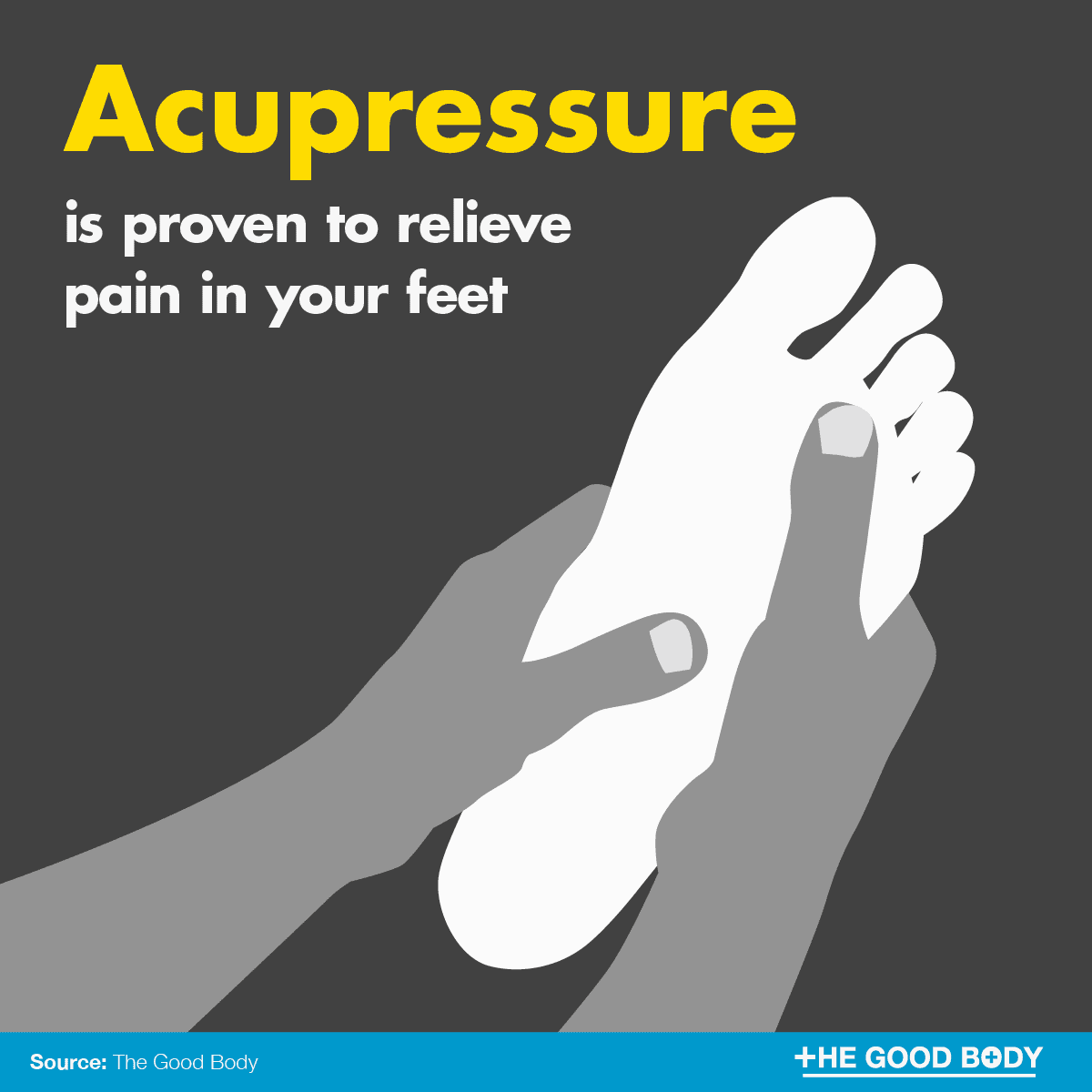
It’s an accessible style of massage as you can buy a low-cost acupressure mat and learn how to use the treatment in the comfort of your own home.
Acupressure has a wealth of other health advantages too, such as relieving anxiety and boosting your circulation.
4. Writing in a journal can be an effective way to manage foot pain.
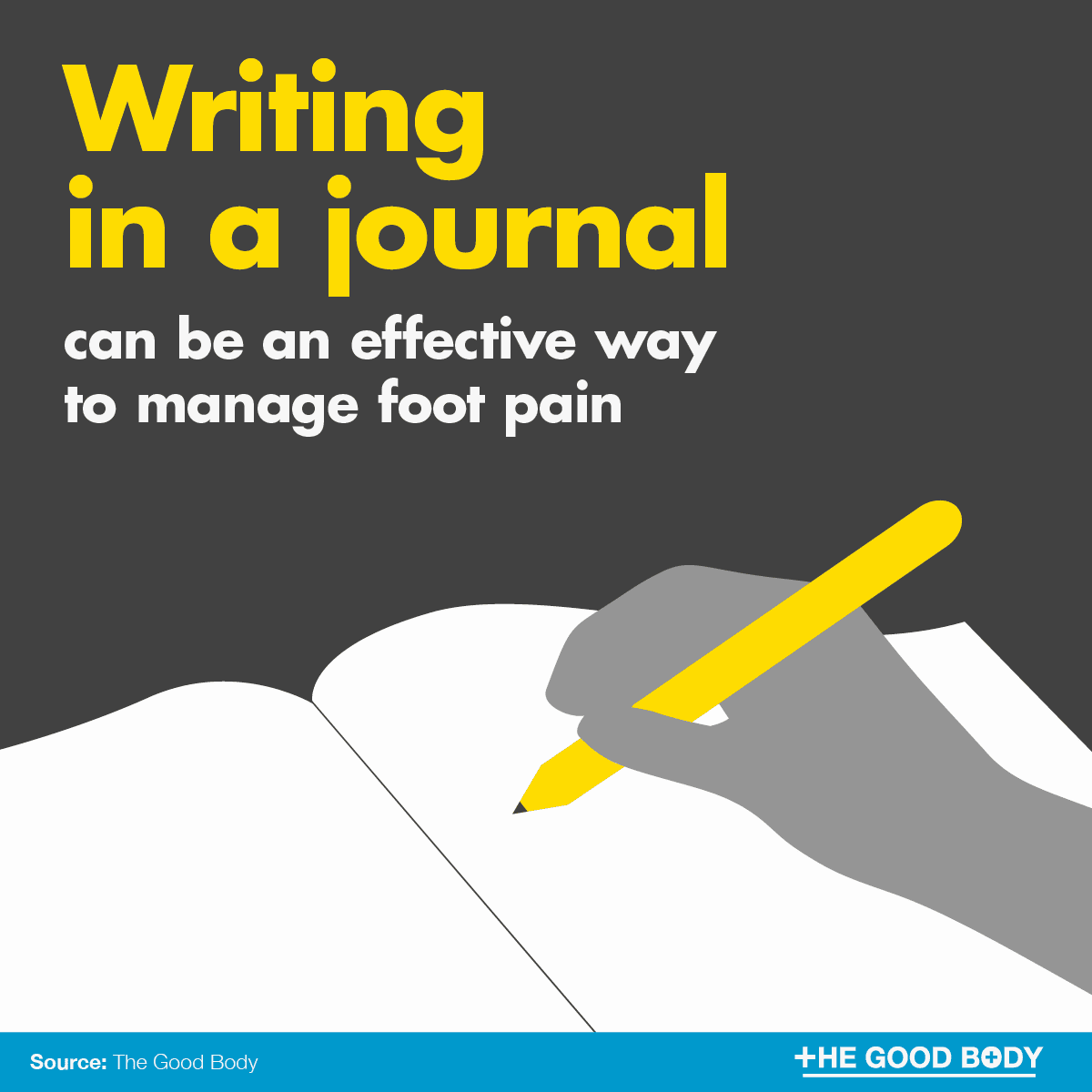
Experts believe it can relieve the anxious and angry feelings that can come with chronic pain, and make you feel you have greater control over your condition.
5. Wearing shoes that don’t fit well is one of the main causes of ingrown toenails.
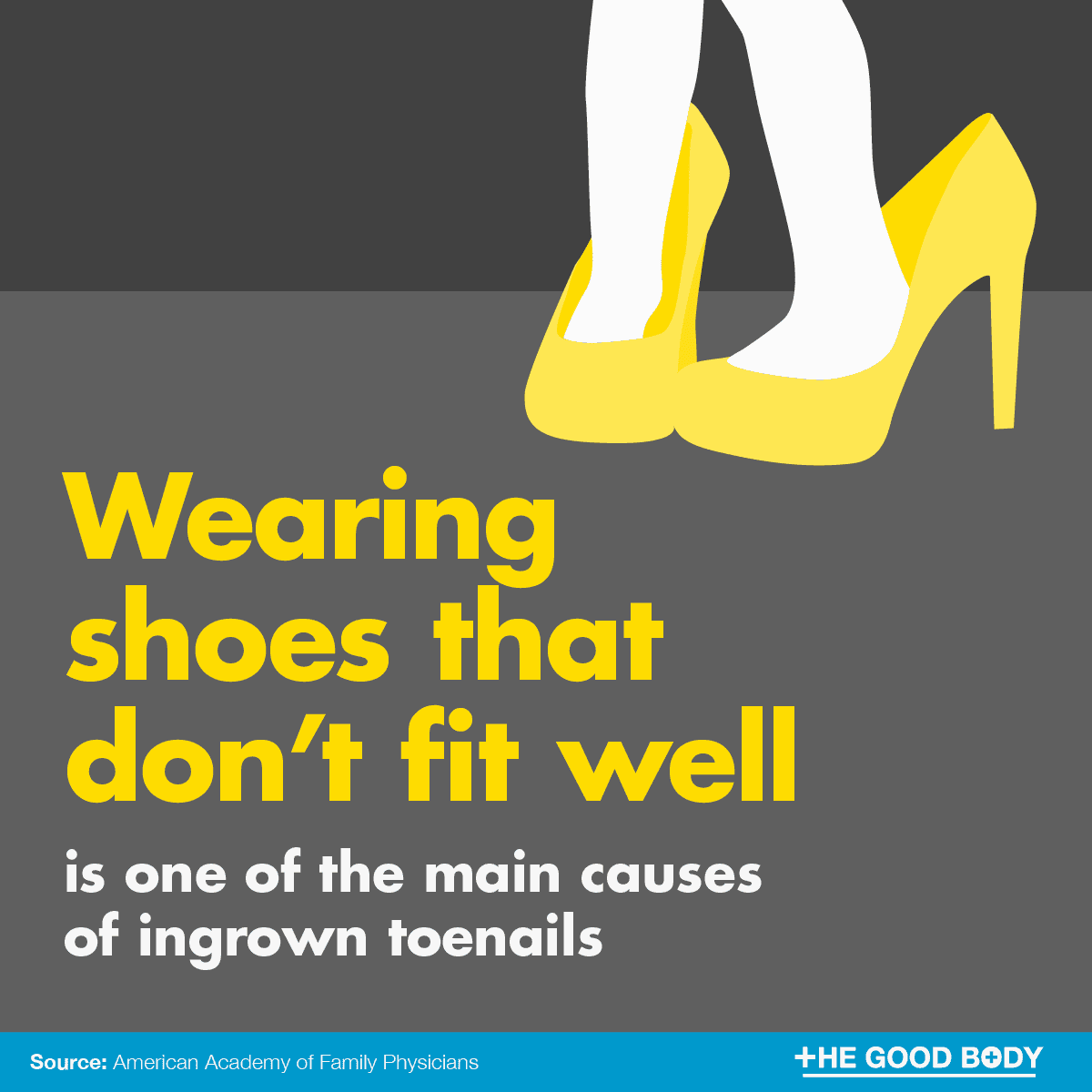
Facts about Toes
Ever wanted to know more about your toes? Of course you have!
Read on for more fascinating facts about your toes:
1. Your big toe only has two bones, compared to your other toes which each have three
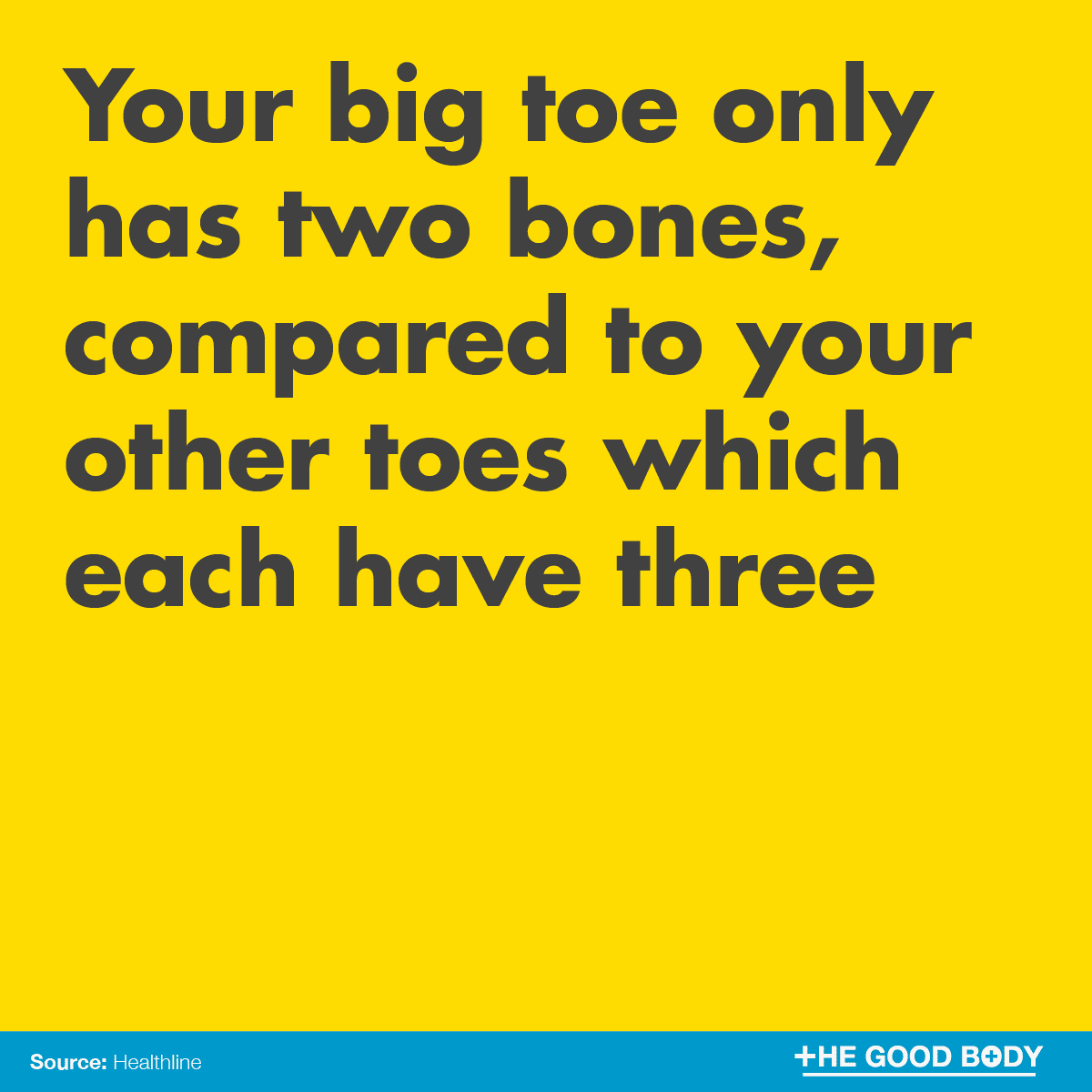
We hope you’ve learned a thing or two about your feet.
Now that you know how hard your feet work day after day, remember to take the time to care for them.
References
- Spanne, A. (2018). 14 Facts About Feet [Online]. Mental Floss. Available from: https://www.mentalfloss.com/article/72021/14-funky-facts-about-feet [Accessed 11 January 2023]. ↩
- Scott, M. (2017). Shoe Sizes Explained [Online]. Our Everyday Life. Available from: https://oureverydaylife.com/shoe-sizes-explained-12207347.html [Accessed 11 January 2023]. ↩
- Harvard Health Publishing (2014). Foot massage: The pause that refreshes and is good for you! [Online]. Available from: https://www.health.harvard.edu/mind-and-mood/foot-massage-the-pause-that-refreshes-and-it-good-for-you [Accessed 11 January 2023]. ↩
- Rieck, T. (2020). 10,000 steps a day: Too low? Too high? [Online]. Mayo Clinic. Available from: https://www.mayoclinic.org/healthy-lifestyle/fitness/in-depth/10000-steps/art-20317391 [Accessed 11 January 2023]. ↩
- American Podiatric Medical Association (2014). Public Opinion Research on Foot Health and Care [Online]. Available from: https://www.apma.org/files/APMA2014TodaysPodiatristSurveyAllFindings.pdf [Accessed 19 March 2021]. ↩
- Hughes, R. (2021). Feet & Footwear Myths [Online]. Natural Footgear. Available from: https://naturalfootgear.com/blogs/educational-articles/feet-footwear-myths [Accessed 11 January 2023]. ↩
- Advanced Foot & Ankle Care Centers (2021). Myths About Foot & Ankle Injuries [Online]. Available from: https://www.afacc.net/foot-problems/myths/ [Accessed 11 January 2023]. ↩
- Spanne, A. (see footnote 1) ↩
- Centers for Disease Control and Prevention (2020). How CDC Improves Quality of Life for People With Arthritis [Online]. Available from: https://www.cdc.gov/chronicdisease/resources/publications/factsheets/arthritis.htm [Accessed 11 January 2023]. ↩
- Centers for Disease Control and Prevention (2018). Arthritis-Related Statistics [Online]. Available from: https://www.cdc.gov/arthritis/data_statistics/arthritis-related-stats.htm [Accessed 19 March 2021]. ↩

